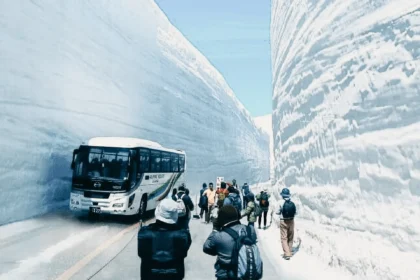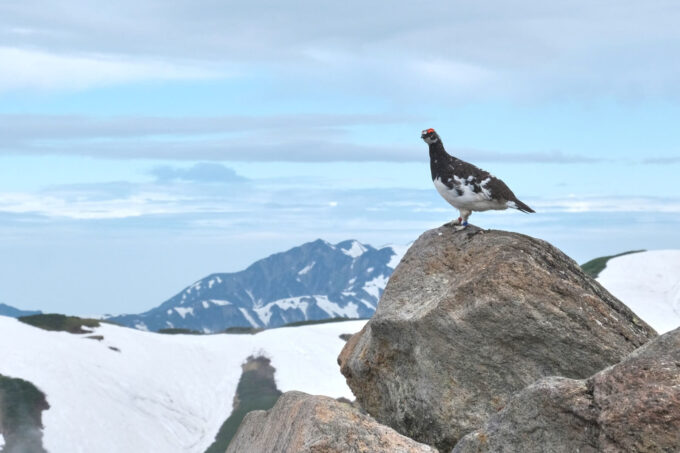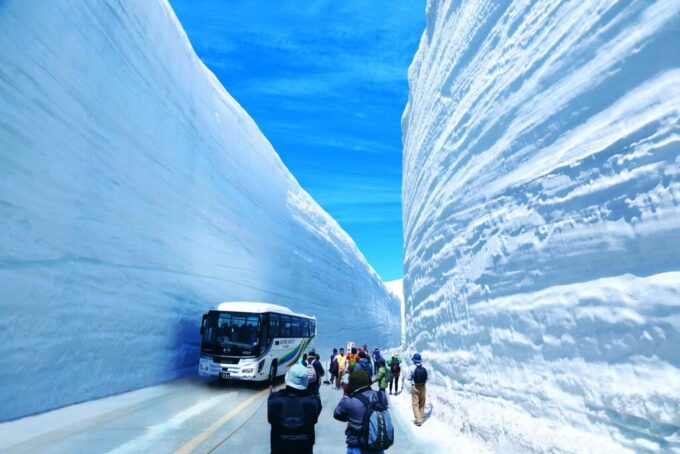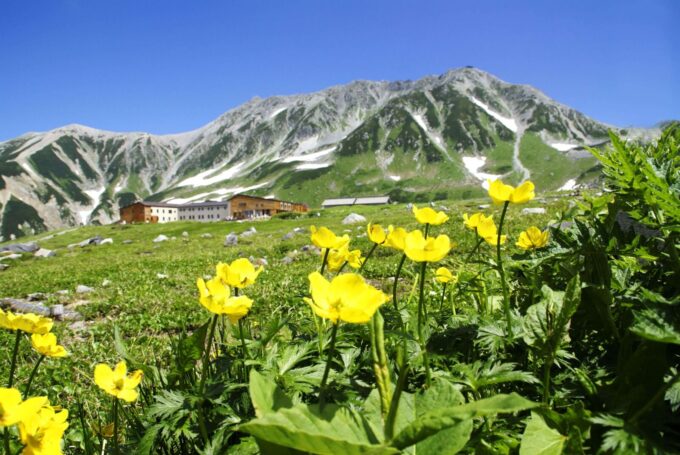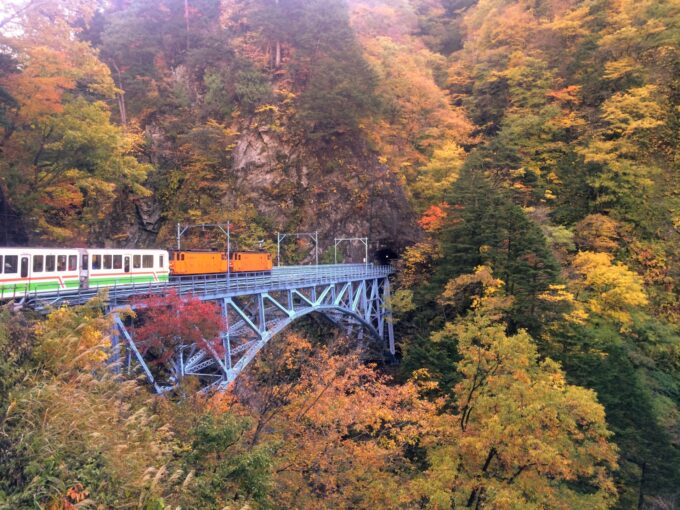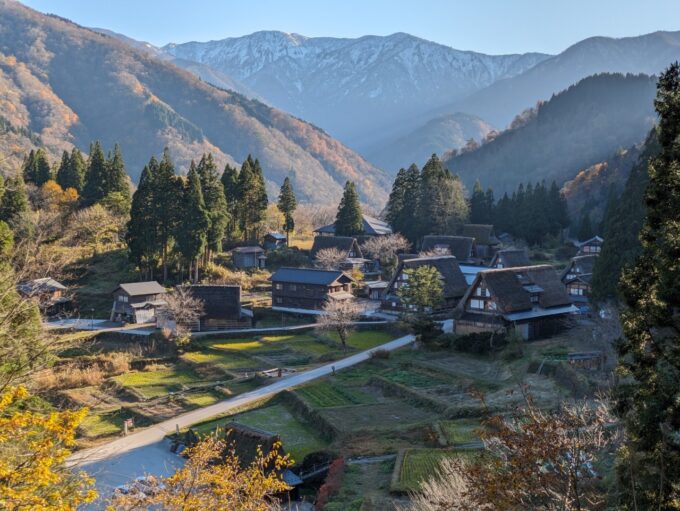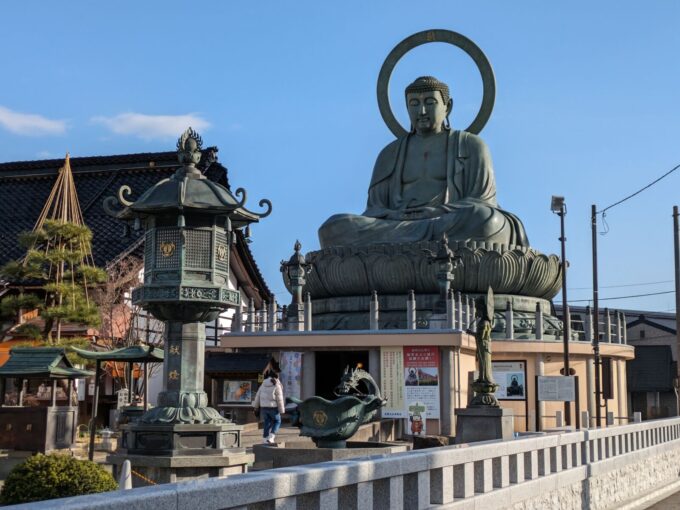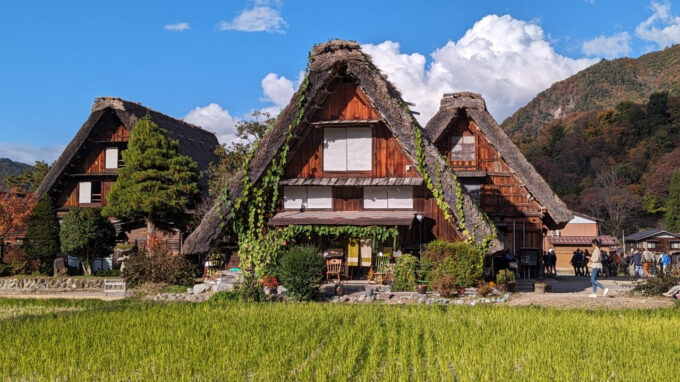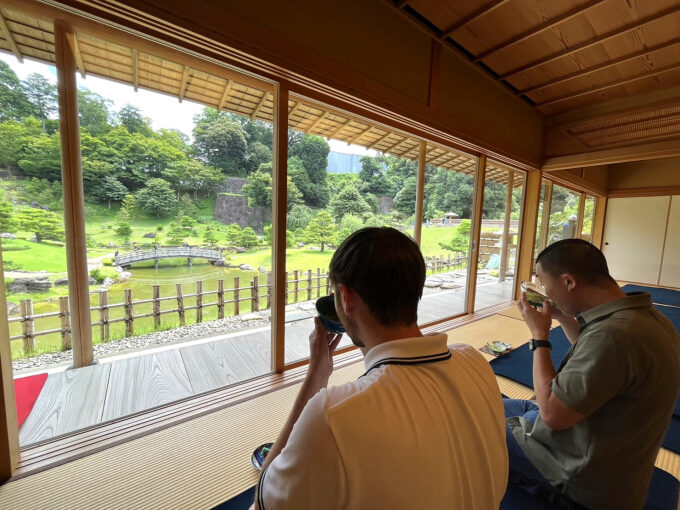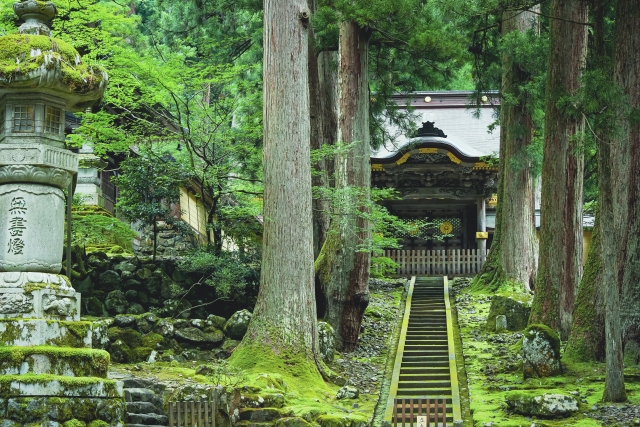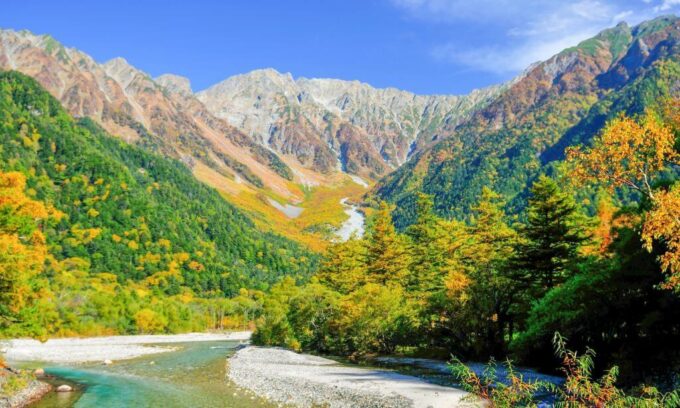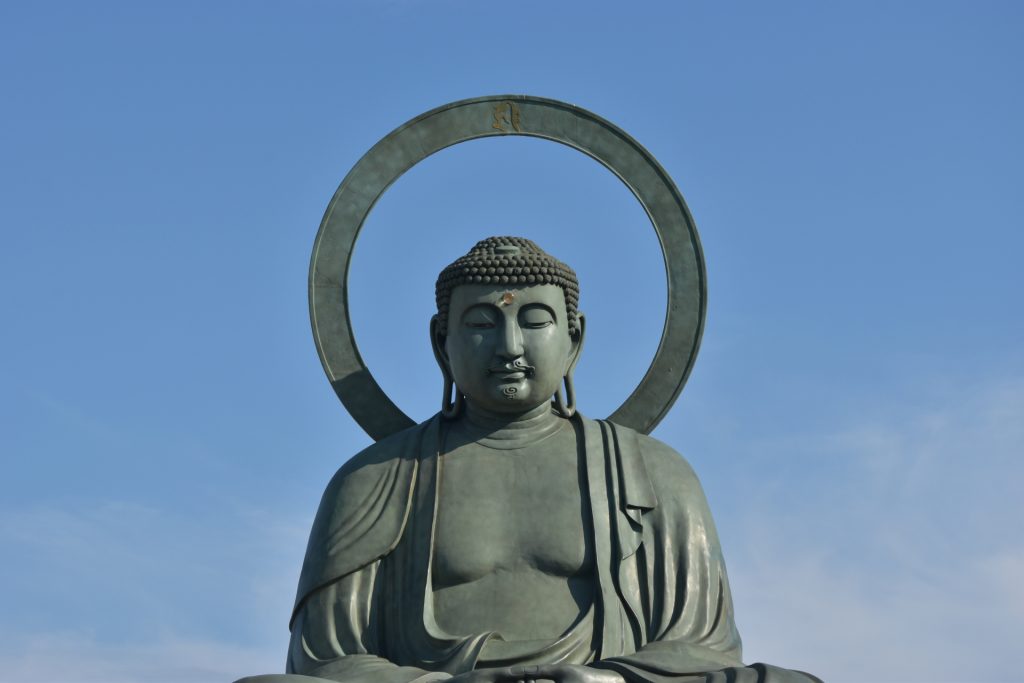
While the port city of Toyama somewhat lives in the shadow of nearby Kanazawa and is often over-looked, it can be easily used as a transit point enroute to the Tateyama-Kurobe Alpine Route and other regional highlights. While it is true that the city does not have the same traditional attractions of Kanazawa, Toyama is a pleasant city with enough to entertain visitors for a day. On this page you will find the following information:
-- 25 Best Things to Do Around Toyama
-- Best Places to Stay When Visiting Toyama
-- Tours & Charters Around Toyama
Located nearby Toyama Bay, the region is known throughout Japan for its fantastic seafood. One of the great pleasures of visiting the city is trying its famous seafood, best experienced at the seafood markets on the coast. But if you don't have time to explore and are just passing through, it's worth noting that there are excellent seafood restaurants inside Toyama Station or in the nearby precinct, which also includes Toyama Castle Park and Toyama Glass Art Museum. Let's start with the obvious question:
WHERE IS TOYAMA?
Toyama is located on Japan’s north coast, around 400KM / 6-hours to the north-west of Tokyo. Despite being located at quite some distance from the capital, as a stop on the Hokuriku Shinkansen line running from Tokyo to Kanazawa, Toyama Station is easy to reach – taking around 2.5 hours using the train. Located only a short distance from Kanazawa, Toyama is also within easy reach of more distant cities including Kyoto and Osaka thanks to the Hokuriku Shinkansen combined with the Thunderbird Express Train, from where its an easy and quick onward journey to Toyama. Best-known for its outstanding seafood – considered some of the best in Japan – Toyama is a great destination for foodies while also a convenient launching point from where to head to the nearby Tateyama-Kurobe Alpine Route, the historic old town of Takayama and explore the many attractions of Japan’s highest mountain range, the North Alps.
25 BEST THINGS TO DO AROUND TOYAMA
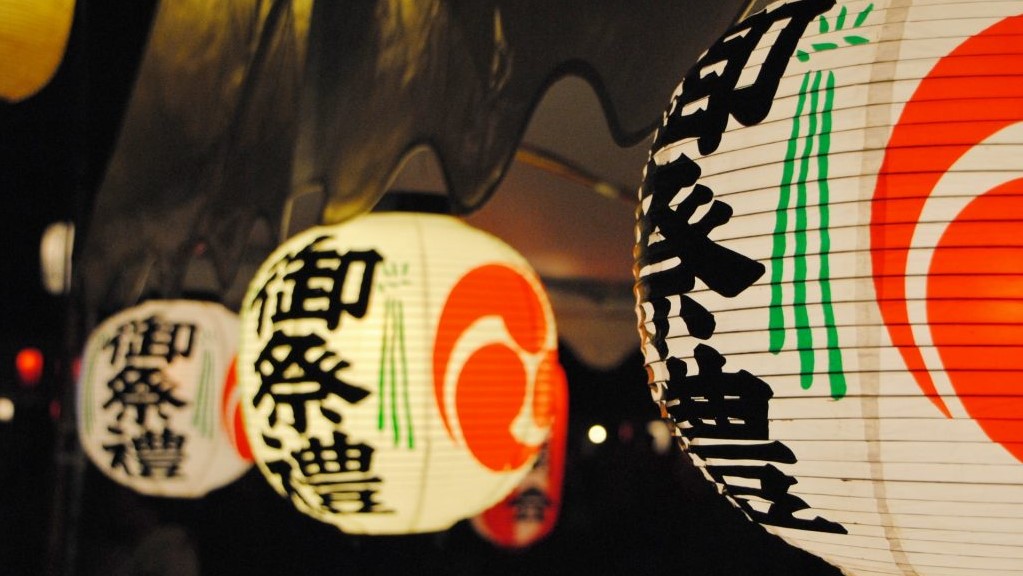
Located nearby Toyama Bay, the city and region are known throughout Japan for its fantastic seafood – best enjoyed at a coastal market or at one of the city’s many restaurants. The city itself is modern and energetic and an ideal launching point from where to access the Tateyama-Kurobe Alpine Route, Takayama and the North Alps. Here's our suggestion of what to do while in Toyama:
1 / TATEYAMA-KUROBE ALPINE ROUTE / April to November
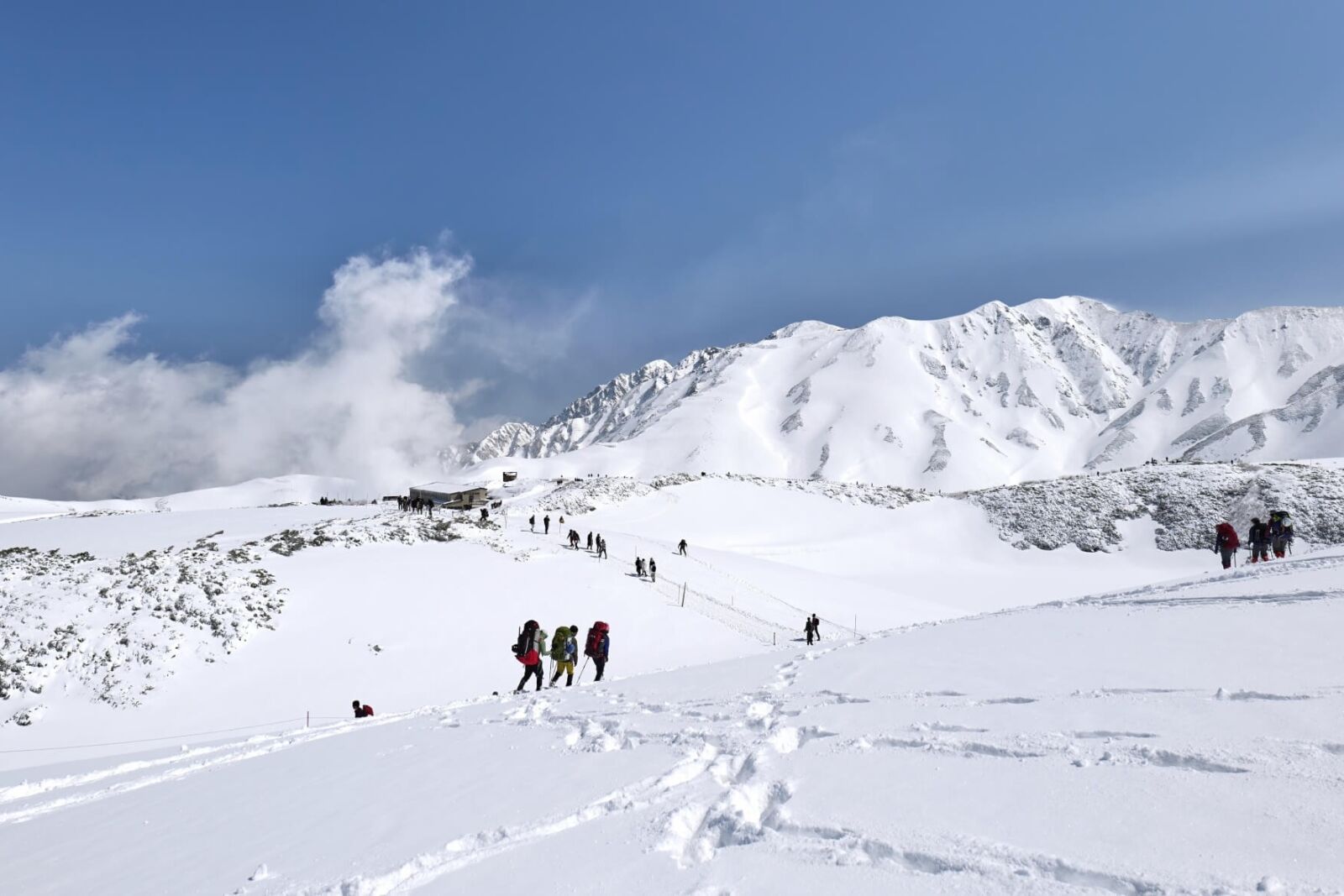
Heralded as one of Japan’s best experiences, traversing the Tateyama-Kurobe Alpine Route takes approximately 6 hours without allowing for time to stop and enjoy all of its stunning sights. In reality, undertaking a visit to the Alpine Route is therefore a full-day activity. Visitors can start from Toyama via Tateyama Station or Nagano via Ogizawa Station, and choose to finish on the other side or return to their point of origin. A series of mountain transports including trolley buses, cable cars, a ropeway, and coaches transport visitors to and from Murodo Station – which at 2540 meters is the highest station in Japan.
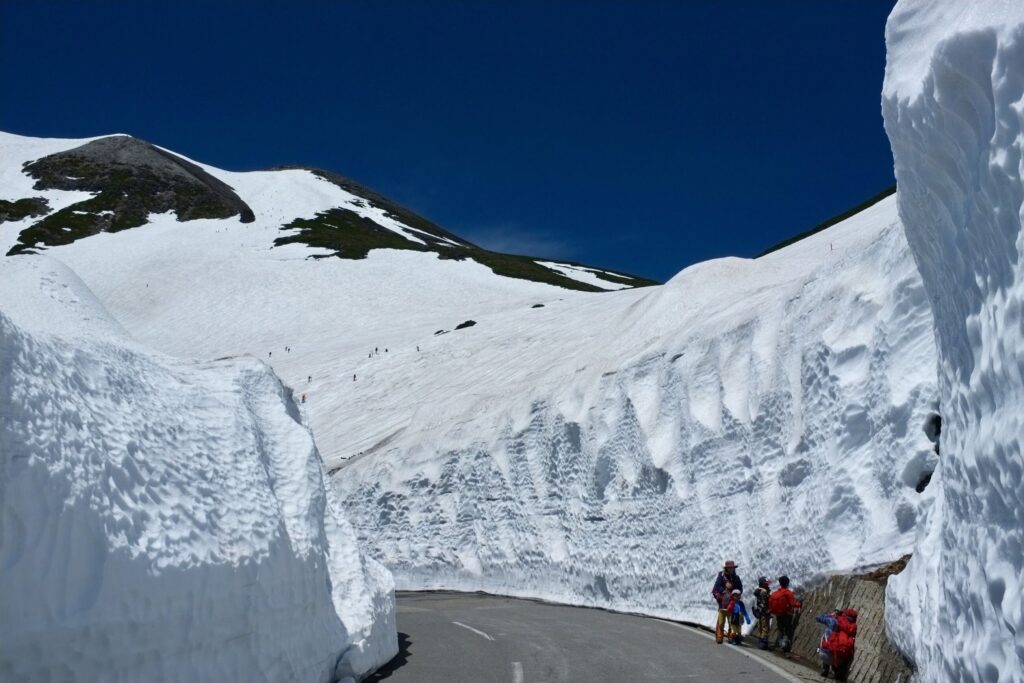
The easiest way to make it up to this magnificent natural beauty is through one of our tours. Hop on one of our buses as we head up the mountain, stopping in a mysterious village before reaching the top where you can explore the Snow Walls and other areas. Check here for our Tateyama-Kurobe Alpine Route from Kanazawa and Toyama.
New Tour
1 Day Tour from Kanazawa & Toyama: Tateyama Alpine Route Snow Wall and Mysterious Valley
- Spots:
- Pick-up:
- Drop-off:
If you are interested in coming from the Nagano side, we also have a tour from there as well! Ride all different types of transportation as you have spectacular views at Kurobe Dam and on the ropeway. Click on the tour card below to learn more!
Popular
[Spring Only] 1-Day Tour from Nagano: Snow Walls of Tateyama-Kurobe Alpine Route
- Spots:
- Pick-up:
- Drop-off:
1a / TATEYAMA-KUROBE ALPINE ROUTE (More Information)
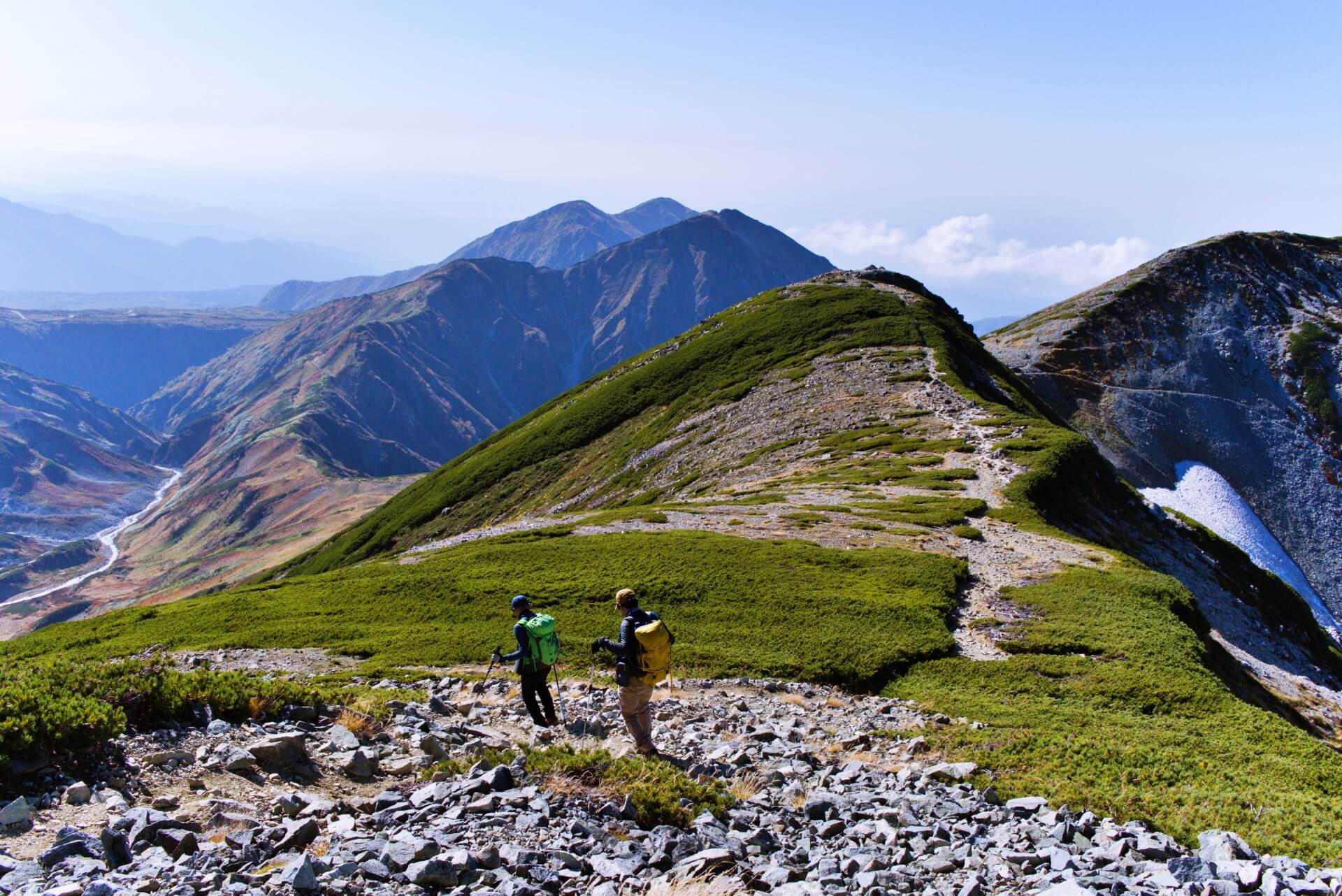
Open from mid-April to mid-November, the Alpine Route is most famous for its immense snow walls which, at their peak, ascend 20 meters above the road below. The walls are at their best from the opening day in April until late-June, after which outstanding hiking is available through summer and autumn, climaxing with stunning autumn colors in October until the route closes again in November.
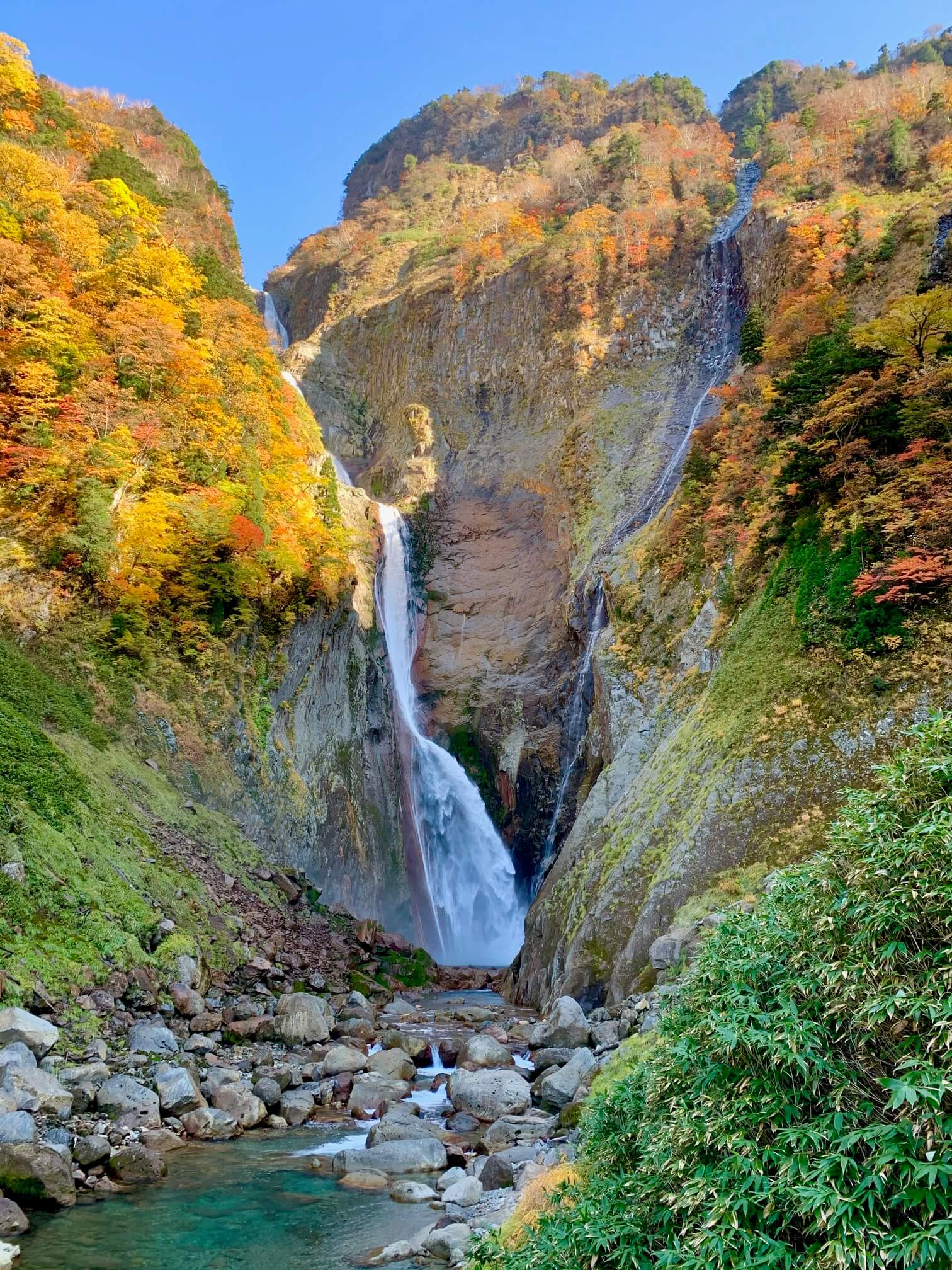
Often missed by visitors to the Tateyama-Kurobe Alpine Route, you will pass the Shomyo Falls between Bijodaira and Midogahara, as you ascend from Tateyama Station. At 350 meters in height, Shomyo Falls is Japan’s tallest waterfall. The four-stage falls are a spectacular sight which in spring becomes even more remarkable, when a twin waterfall – Hannoki Falls – begins to fall as the snow melts on the Midagahara plateau. The waterfall can be reached on foot on the walking trails.
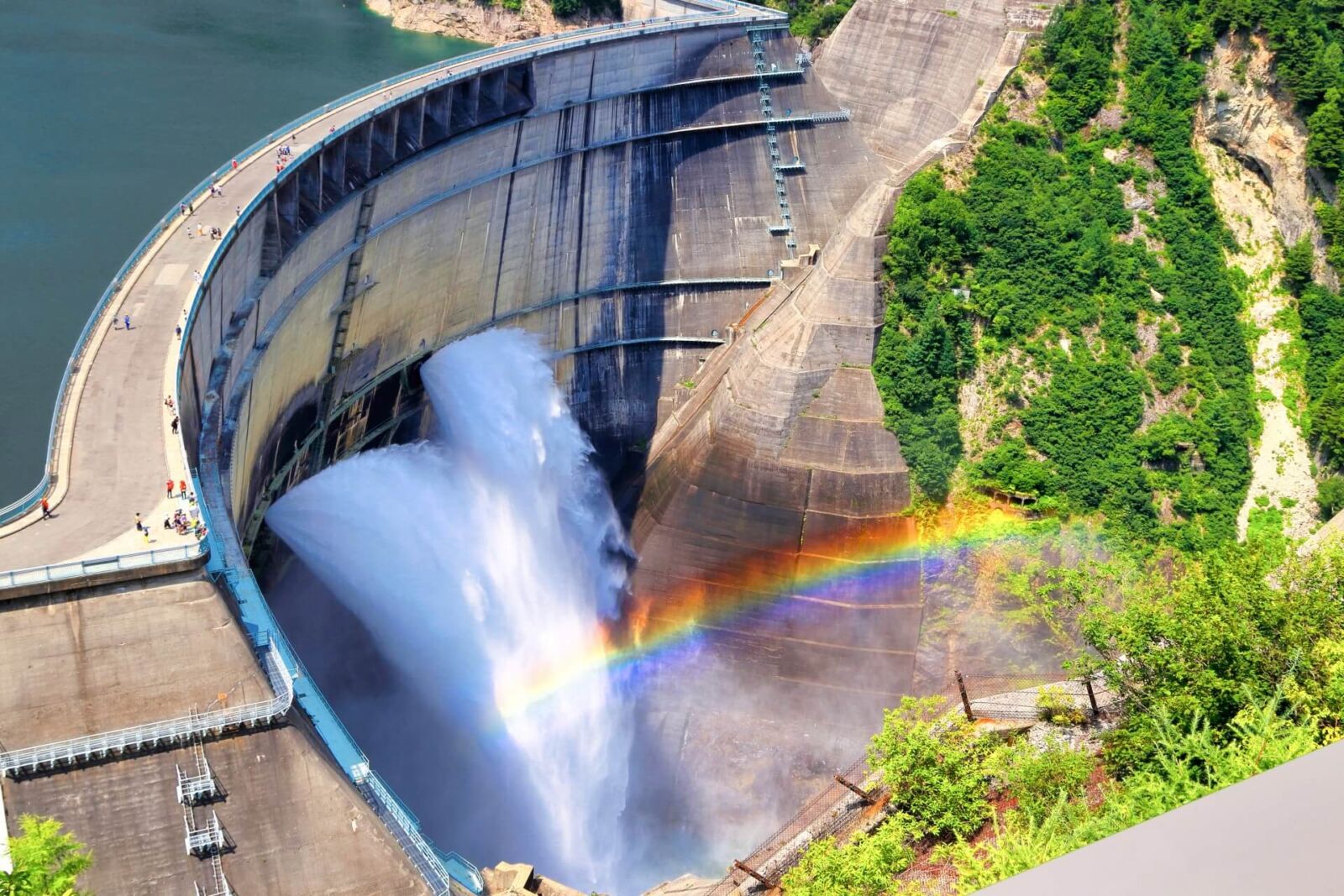
Located on the Nagano-side of the Tateyama-Kurobe Alpine Route, the Kurobe Dam will only be accessible for visitors coming up and/or going down that side of the mountain range. When coming from Toyama, this means it will be on your way down toward Nagano, once you’ve enjoyed time at the summit. The Kurobe Dam is Japan’s highest and tallest – with its massive concave walls rising 186 meters. Constructed between 1956 and 1963, the dam is a source of national pride and grand engineering feat.
[Summer/Autumn only] Tateyama-Kurobe Tour: Walking on the 'Roof of Japan'
- Spots:
- Pick-up:
- Drop-off:
2 / RIDE THE KUROBE GORGE RAILWAY / best: May to November
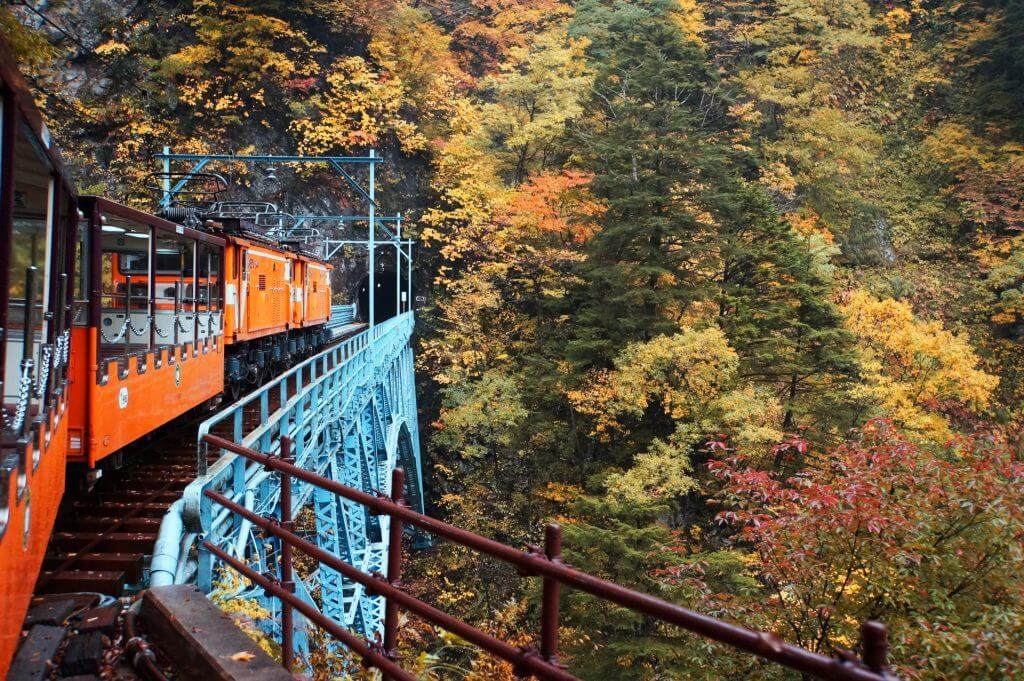
Accessible from Toyama Station via Unazuki Onsen, Kurobe Gorge is quickly emerging as a popular destination for international visitors. Regarded as one of the three most beautiful gorges in Japan, Kurobe is best experienced riding the Kurobe Gorge Railway which covers a meandering and winding 20km span in approximately 80 minutes. The open-air carriages allow visitors an intimate experience of the surrounding landscape with stations along the route allowing access to walk trails, onsen, restaurants and accommodation. The rail line includes several spectacular bridges and truly beautiful hot springs including Kuronagi Onsen and the riverside Kanetsuri Kawara Onsen. Highly recommended, and easy for anyone to take part in by booking our tour below.
1 Day Tour from Kanazawa: Kurobe Gorge and Unazuki Onsen
- Spots:
- Pick-up:
- Drop-off:
3 / TULIP FESTIVAL / Late April to Early May
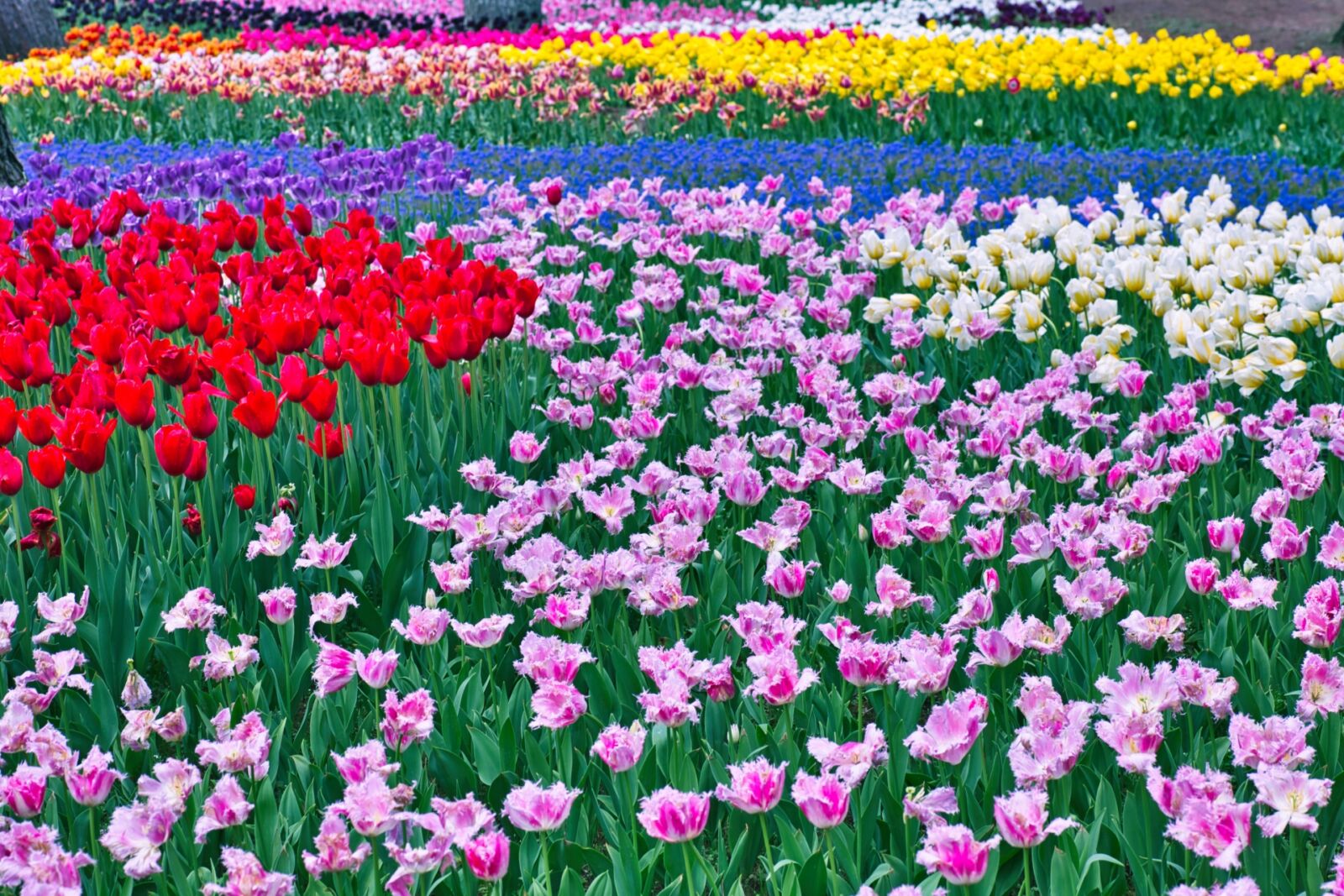
In the small town of Tonami in western Toyama Prefecture is a brilliant sight that starts at the end of April and only lasts for about two weeks. This is the Tonami Tulip festival, featuring over 3 million flowers across the entire 7 hectare park. There are large colorful fields of tulips, lakes surrounded by tulips, tulip tunnels and more. It is truly a sight to see if you enjoy the fleeting beauty of tulips. If you’re hungry there is also food that is served in and around the park so you can be fully satisfied with your visit.
4 / UNAZUKI ONSEN / all year round
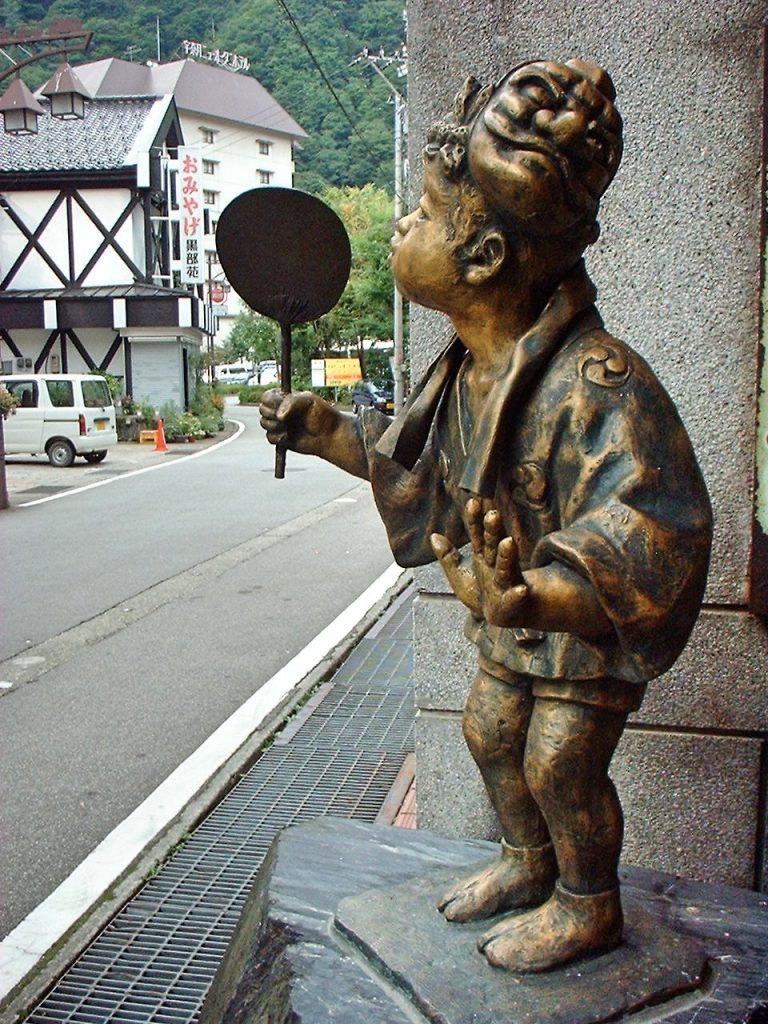
Situated at the entrance of the beautiful Kurobe Gorge, Unazuki Onsen is the largest hot spring town in Toyama Prefecture. Home to many guesthouses including traditional ‘ryokan’ and large hotels, the hot springs of Unazuki Onsen are known for the clarity of their water, known to aid healthy and vibrant skin. Located close the coast, the guesthouses of Unazuki Onsen are also known for the quality of their seafood and with a local craft beer brewery nearby. Don't miss the nature walk around the town to get some excellent views of the gorge the village sits in. This is a great place to stay when wanting to enjoy the best of Toyama
5 / GOKAYAMA / all year round
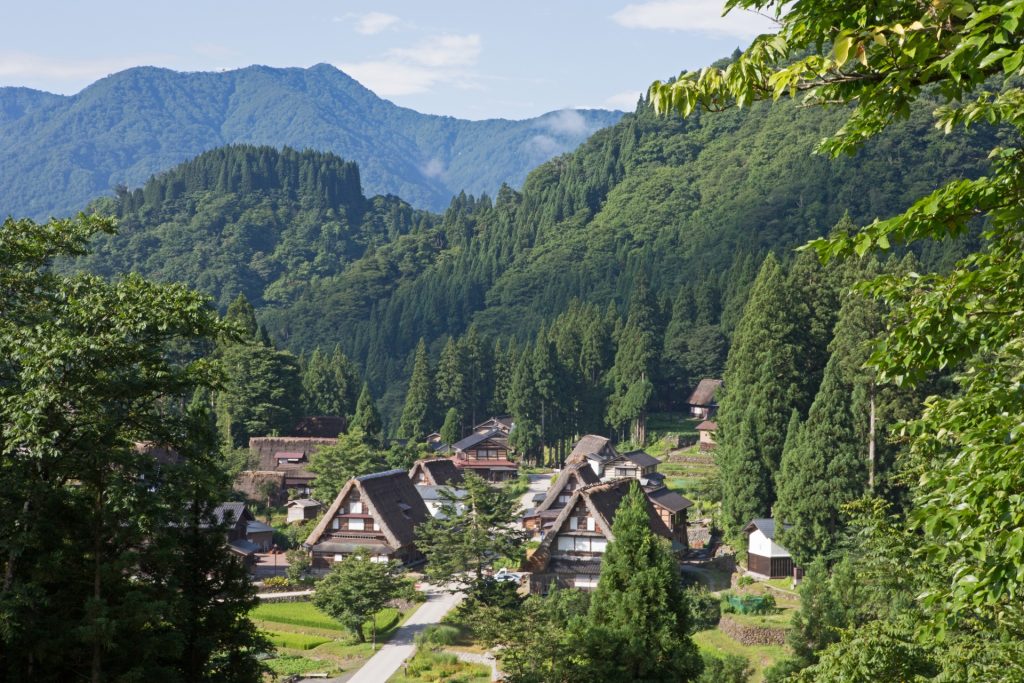
One of the two areas of a UNESCO World Heritage site, Gokayama is the lesser visited but also packs quite a punch. Spread across three major villages, Ainokura, Kamitaira and Suganuma, there is something different to do in each one. Unlike in the more popular Shirakawago, there are options for different experiences in the unique thatched roof gassho-zukuri. You can try your hand at making Japanese paper, tofu, soba and kokiriko, an instrument used for traditional dances in the region. Gokayama is the real, deep Japan that many people are always searching for.
Do you want to experience Ainokura village along with the woodcarving village of Inami and Shirakawago? Join us for a tour where you can experience the real rural Japan along with making your own Japanese washi paper on our Inami-Gokayama-Shirakawago Tour from Kanazawa.
Best Selling
1 Day Tour from Kanazawa: Shirakawa-go, Gokayama and Wood Carving Village
- Spots:
- Pick-up:
- Drop-off:
6 / AMAHARASHI COAST / all year round
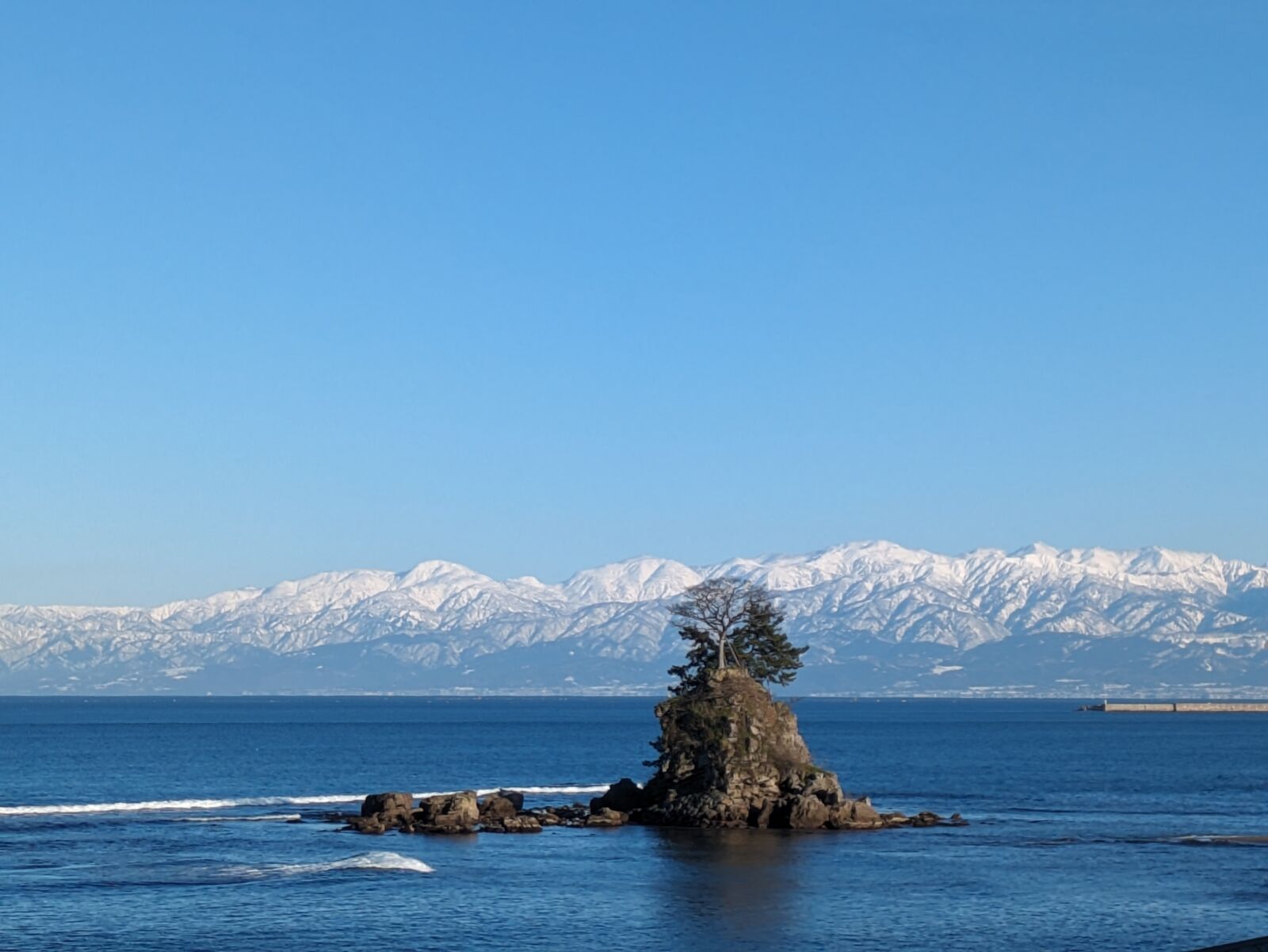
While a little out of the way, the Amaharashi Coast is a famous sight for many Japanese – known for its pristine beauty and Onnaiwa (Woman’s Rock) set against the background of the North Japan Alps including Mt Tate. Having inspired artists and poets of countless years, the coast can be reached using the JR Himi Line from Takaoka Station. Get-off at Amaharashi and walk 5 minutes to the coast – one of the best spots to witness Toyama’s famous mountain vista.
The spectacular view of the mountains against Toyama Bay may be difficult to access so join us for a tour! It combines other sites in Takaoka such as the Japan Heritage Site of Zuiryuji, the Big Buddha of Takaoka and a metalworking workshop. If you’re interested, find more information below on our Takaoka Tour page.
1 Day Tour from Kanazawa: Takaoka's Temples, Metalworking and Mountain Views
- Spots:
- Pick-up:
- Drop-off:
7 / CHERRY BLOSSOMS OF TOYAMA / Late March to Early April
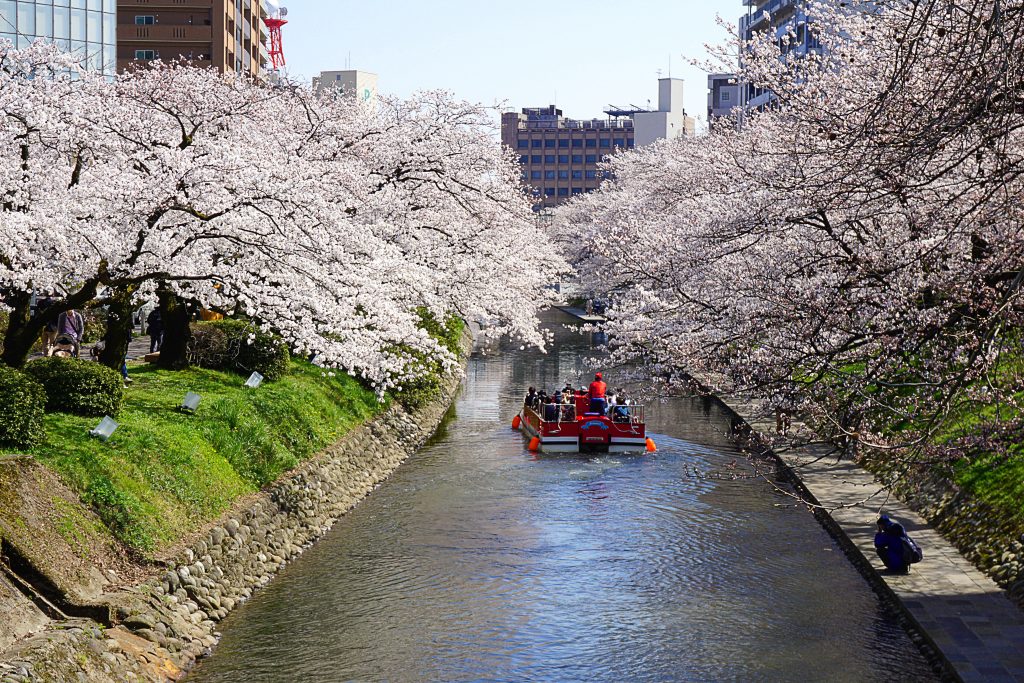
Blooming every April, the cherry blossoms of Central Japan transform the atmosphere and character of the region and banish all thoughts of winter. Known as ‘sakura’ in Japan, the blossoms are viewed as symbolic of the fleeting beauty and fragility of life itself and Japanese look forward to ‘hanami’ (flower-viewing) each spring. Given some parts of Toyama’s higher altitude and cooler climate, the blossoms bloom later than in Tokyo with many varieties of wild cherry trees spread throughout the mountains. The famous spot in Toyama City is Matsukawa Park, which is the picture above. Here you can enjoy a short cruise on a canal while admiring the cherry blossoms all long. Our ‘Cherry Blossoms’ page introduces everything you need to know about the importance of the flowers and where to find them.
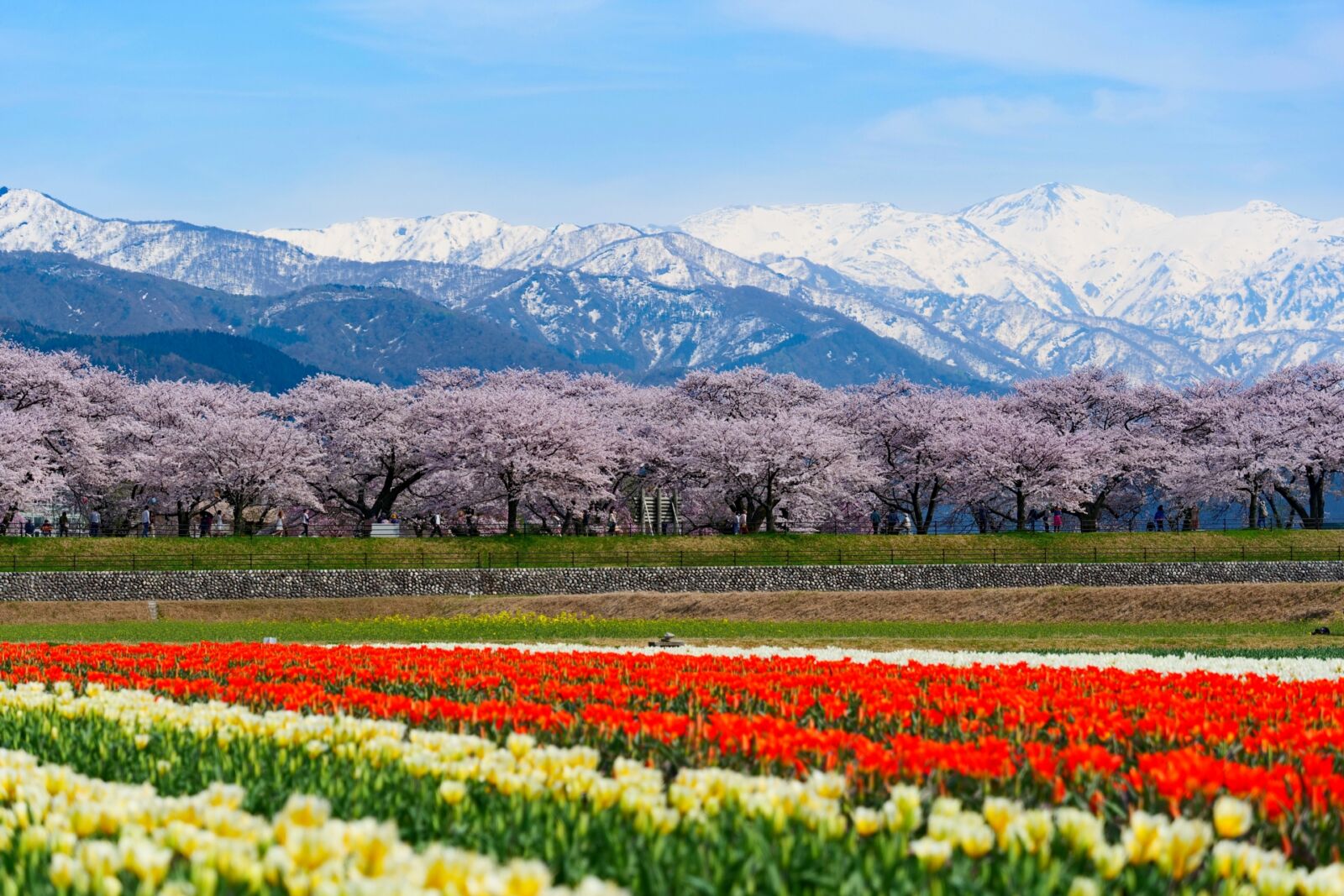
If you are looking for something even more spectacular, going a bit further afield is definitely recommended. In a small town in the eastern part of Toyama is Haru-no-Shijuso, where you can see tulips, cherry blossoms and the snow-capped mountains all lined up in one shot. The cherry blossoms and tulips are both great to walk around and see from all different angles, so try to find your best shot. There are many of these beautiful cherry blossoms spots throughout the prefecture!
8 / TAKAOKA / all year round
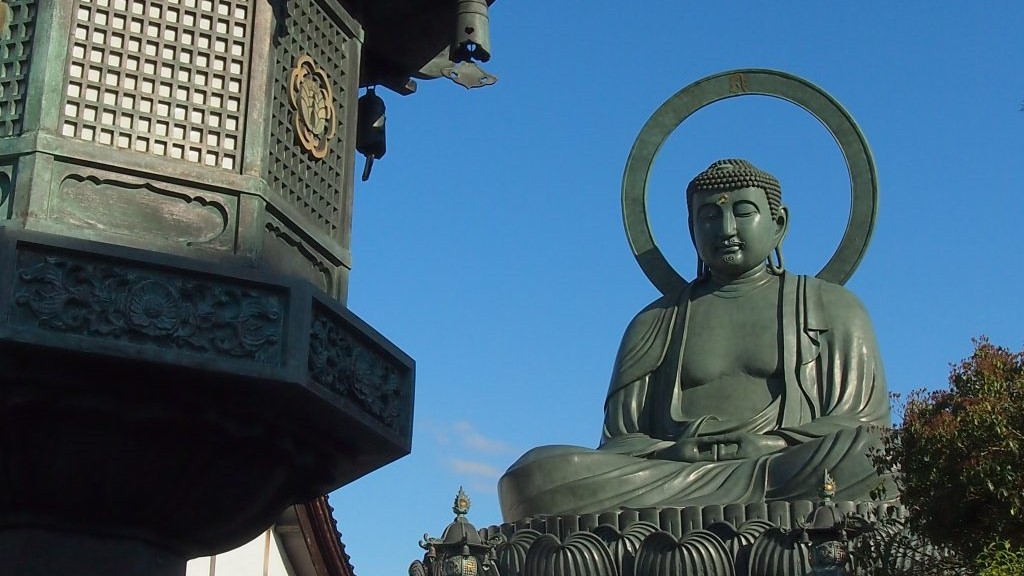
Approximately 50 to 55 minutes from Toyama Station using the Ainokaze Toyama Railway Line, Takaoka is the second largest city in Toyama and home to some notable historic attractions. The Takaoka Daibutsu is one of Japan’s great Buddha statues – along with the large Buddha in Todai-ji Temple, Nara and the Kamakura Daibutsu. Nearby Zuiryu-ji Temple belongs to the Soto Zen Buddhist sect and is a registered National Treasure. The two important Buddhist sites can easily be visited together along with the historic districts of Kanayamachi and Yamachosuji – an atmospheric precinct of traditional workshops.
The city is filled with so many great sights and best of all, usually without the crowds of other more popular destinations. You can see the Japan Heritage Site of Zuiryuji, the Big Buddha of Takaoka. the beautiful Amaharashi Coast and also make your own cup at a metalworking workshop. If you’re interested, find more information on our Takaoka Tour page.
1 Day Tour from Kanazawa: Takaoka's Temples, Metalworking and Mountain Views
- Spots:
- Pick-up:
- Drop-off:
9 / TOYAMA BAY SEAFOOD / all year round
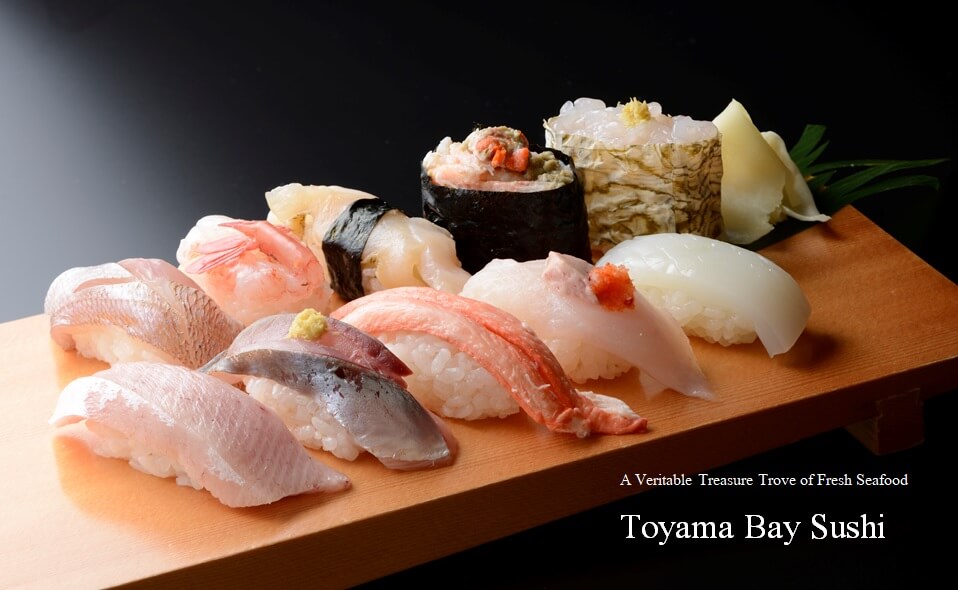
Toyama Prefecture is known throughout Japan for its delicious seafood sourced from the plentiful waters of Toyama Bay. The topography of the bay creates a natural fish tank, as the sea floor drops away sharply, creating a submerged canyon which forms a natural boundary for sea life. Nutrients wash down from the North Japan Alps creating bountiful fishing grounds which feed the nearby coastal markets. Many catchment areas are only 20-minutes from the coastal markets, meaning that the day’s catch is still exceedingly fresh when it arrives at vendors and restaurants – both on the coast and in Toyama City. Venturing to any of those markets is one of the great joys of visiting Toyama. Shinminato Kito Market – open daily from 09:00 to 17:00 – is a great place to start! Don’t have time to head to the coast? No problem at all! You’ll find plenty of restaurants in Takaoka and Toyama City selling the day’s fresh catch including the highly-sought after ‘Toyama Bay Sushi’.
10 / TOYAMA STATION PRECINCT / all year round
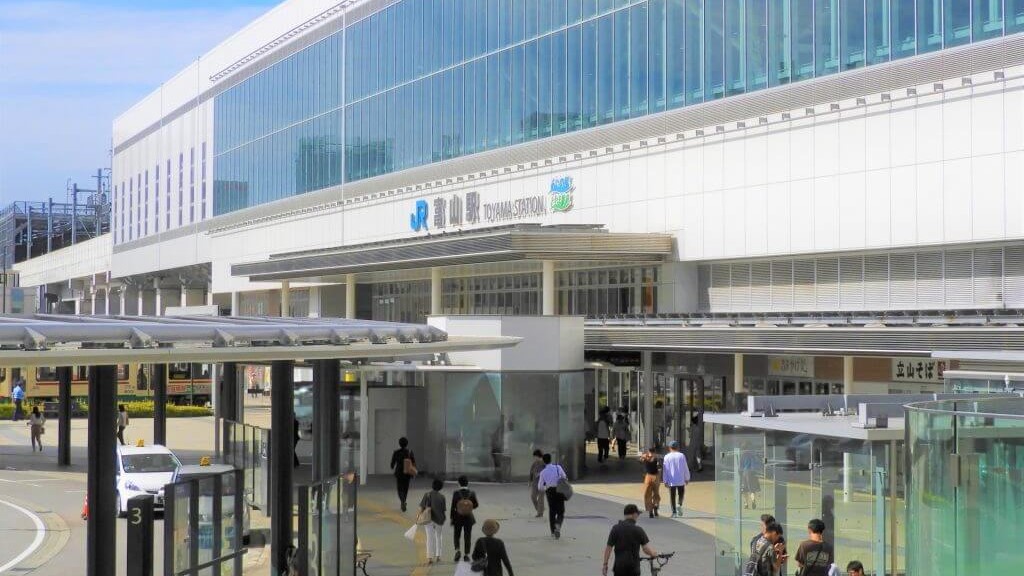
If you headed to Toyama, chances are that at some stage you’ll be passing through Toyama Station. The station is centrally positioned and within walking distance of nearby attractions including the Toyama Glass Art Museum – see below for details. While visiting the seaside markets of Toyama to sample its famous Toyama Bay Sushi and other seafood – see below for details – is a fantastic option, however if you don’t have time for that but do have time in the station while waiting for your train, there are excellent seafood restaurants inside the station and plenty shops from which to buy a souvenir – including packed and sealed seafood. Hotels and other accommodation options in Toyama can be viewed through our ‘Toyama Area’ hotel page.
11 / ATTRACTIONS OF TOYAMA CITY / all year round
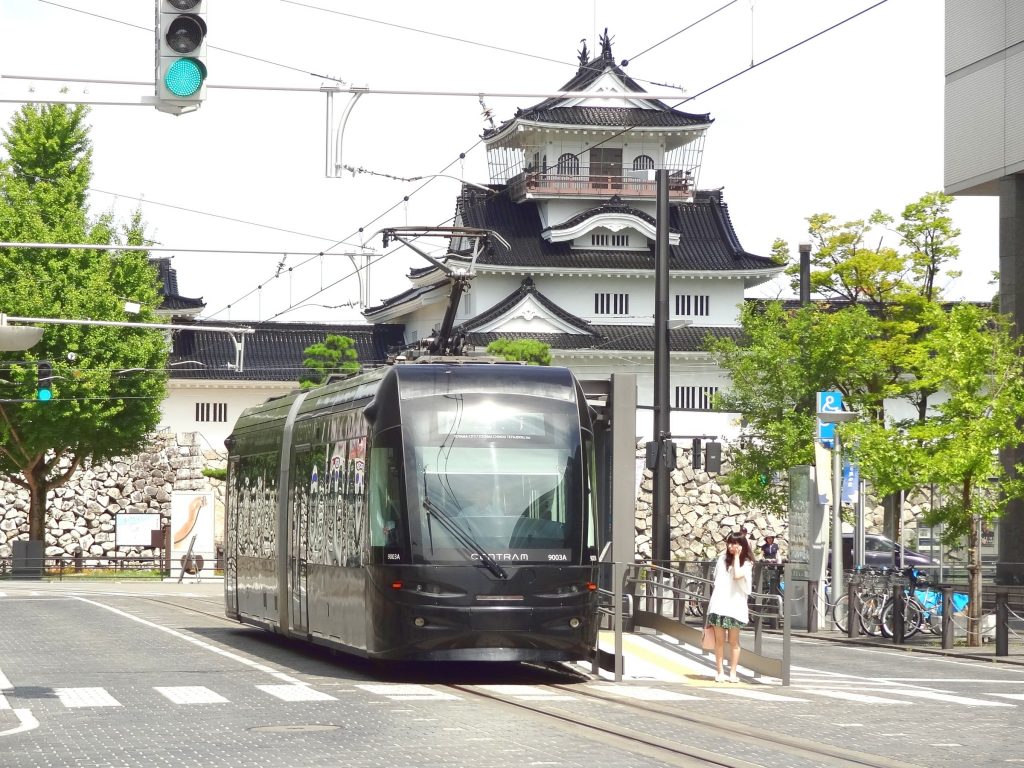
While Toyama itself doesn’t have the attractions and charm of nearby Kanazawa, the city offers enough to keep visitors entertained for a day. Originating from Toyama Station, the city is home to an enjoyable tram network which can be used to access nearby attractions including Toyama Castle Ruin Park. The park covers the former grounds of Toyama Castle and features a reconstructed keep (main tower), art museum and Japanese garden set amongst pleasant grounds.
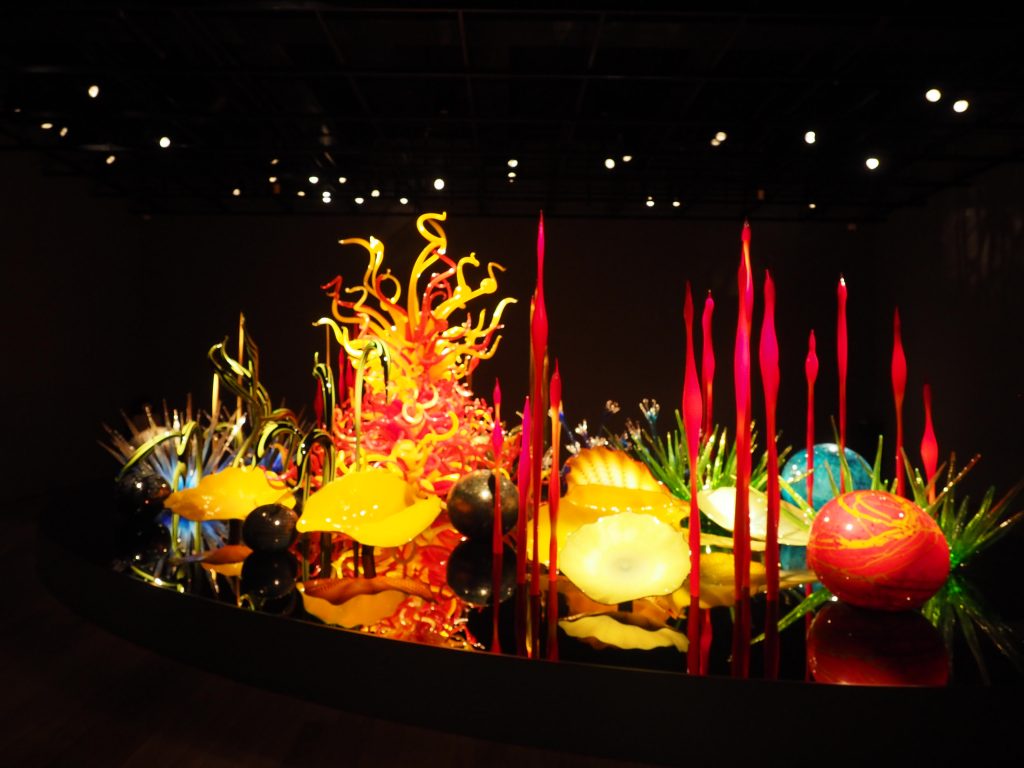
A little further on from the gardens, the Toyama Glass Art Museum was designed by architect Kengo Kuma – designer of the new Tokyo Olympic Stadium – and exhibits beautiful glassworks from around the world. Also nearby the station, the Toyama City Hall Observatory is one of the best spots for viewing the dramatic Tateyama Mountains. Located just across the river from Toyama Castle Ruin Park, it is one of top three spots to view the mountains.
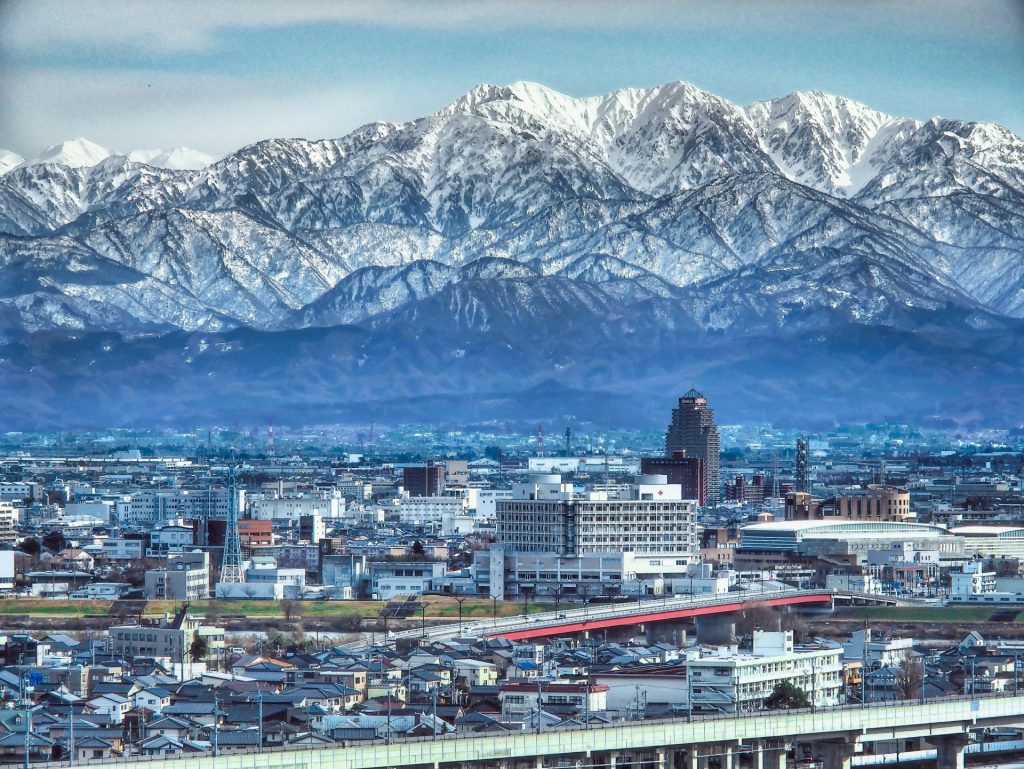
Nearby Kurehayama Park Observatory and the Amaharashi Coast – see below for details – are equally great spots from where to view Toyama’s famous mountain vista.
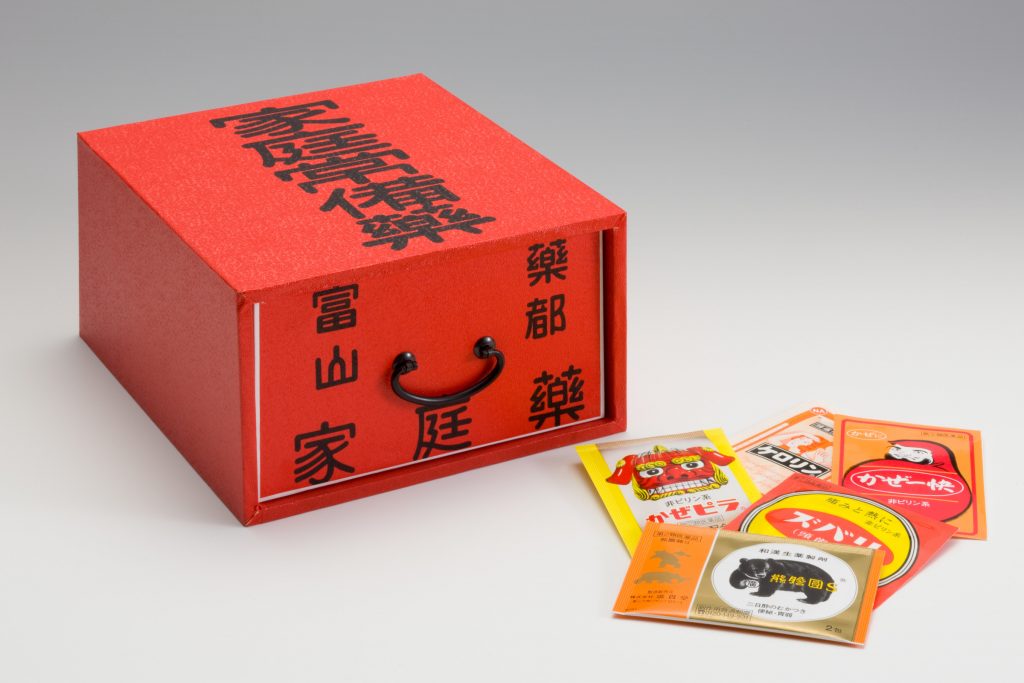
Located only a short distance from Toyama Station, Ikeda Yasubei Shoten is a renowned traditional chemist selling a Japanese and Chinese medicine. Toyama has a strong connect with traditional medicine, and there is no better place to consult with a pharmacist and have remedies prepared especially for you – including the chance to press your own traditional pills.
12 / INAMI & JOHANA / all year round
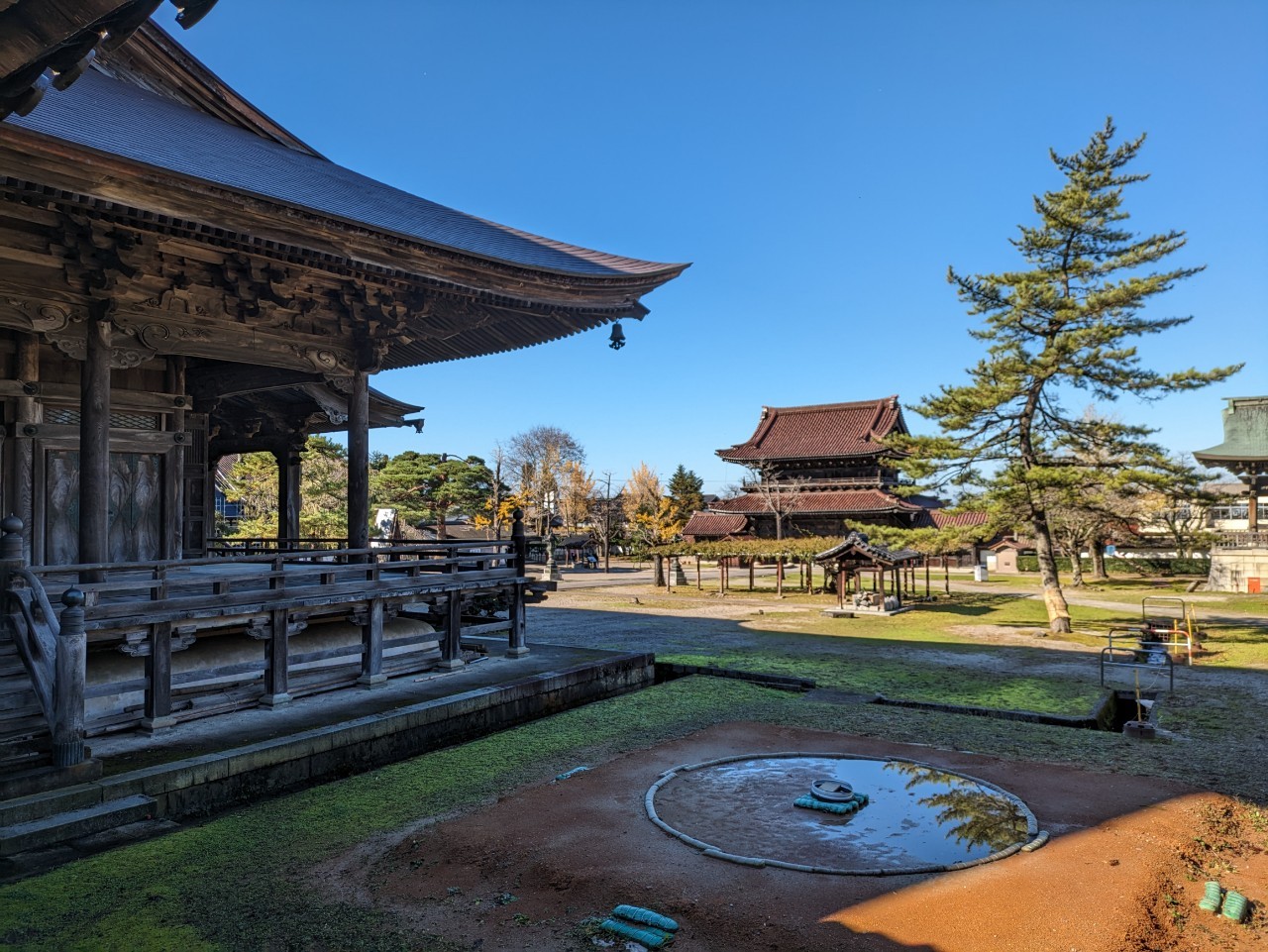
These small towns are often overlooked by those heading straight to the more famous UNESCO sites in Shirakawago and Gokayama but they are definitely worth a stop. Inami is famous for its 250 year history of woodcarving. Zuisenji Temple is a product of this and you can see some amazing carvings all over the grounds. In the town itself there are over 100 master carvers who you can see diligently working on masterpieces in their workshops. If you are really interested in the art you can try it yourself with a few places where you can make your own sake cup or other items.
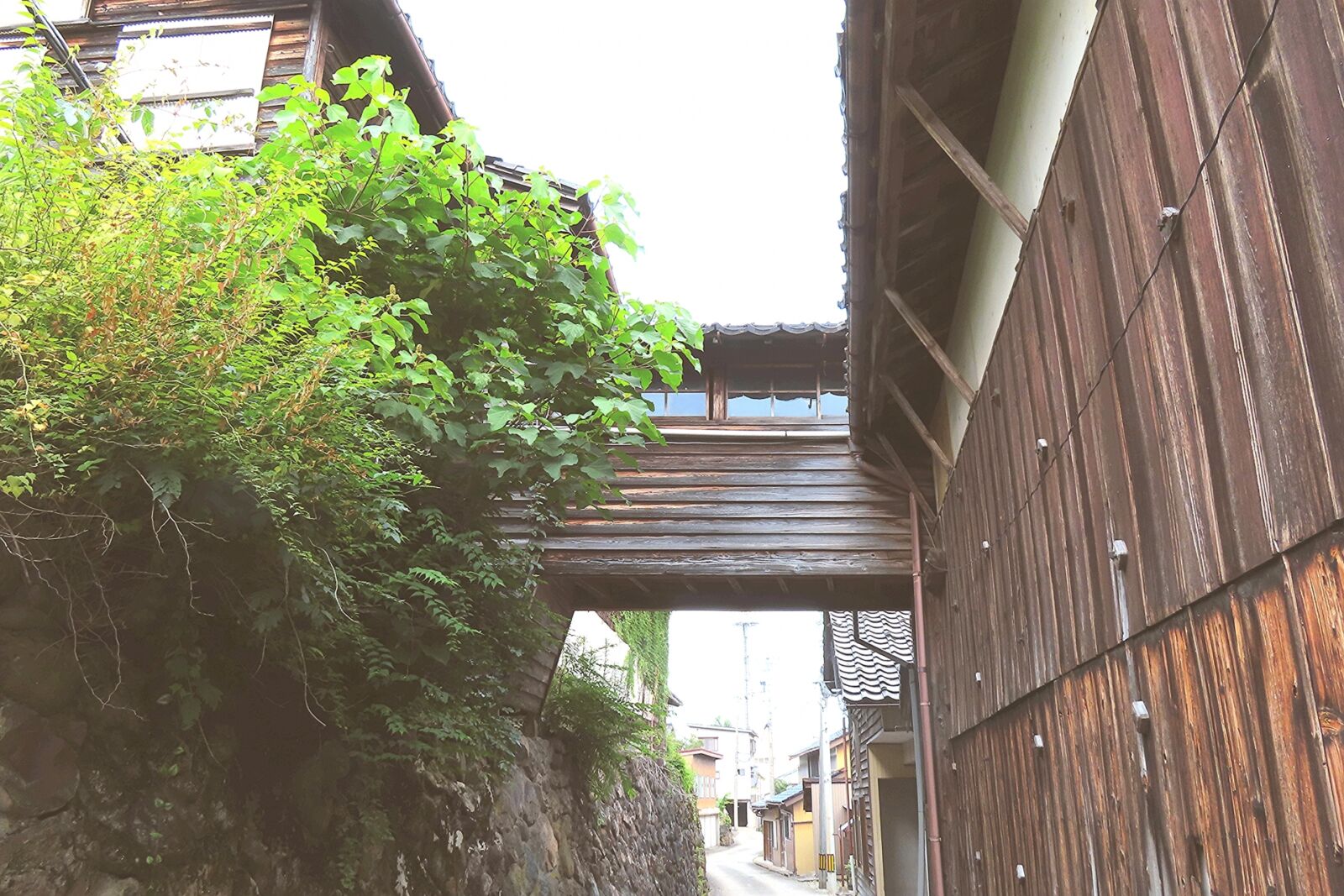
Johana is today famous for its interesting townscape, old temple and festival. If you walk around the town, you’ll feel transported back to the Edo period. It also has many curving stone roads and homes that bridge over the street that leave you wondering how and why it was built that way. There is also a silk factory hidden in the traditional buildings, making for an interesting stop. Finally, there are floats for the Johana Hikiyama Festival that you can see and feel the grandness and awe of the event any time of the year.
If you want to experience the feel of a traditional woodcarving town, Inami, and see master carvers doing their work in their open workshops, join us for one of our tours. You can also see the UNESCO World Heritage Sites of Gokayama and Shirakawago's famous thatched-roof gassho-zukuri houses as well. Check out the tour page below.
Best Selling
1 Day Tour from Kanazawa: Shirakawa-go, Gokayama and Wood Carving Village
- Spots:
- Pick-up:
- Drop-off:
13 / IWASE / all year round
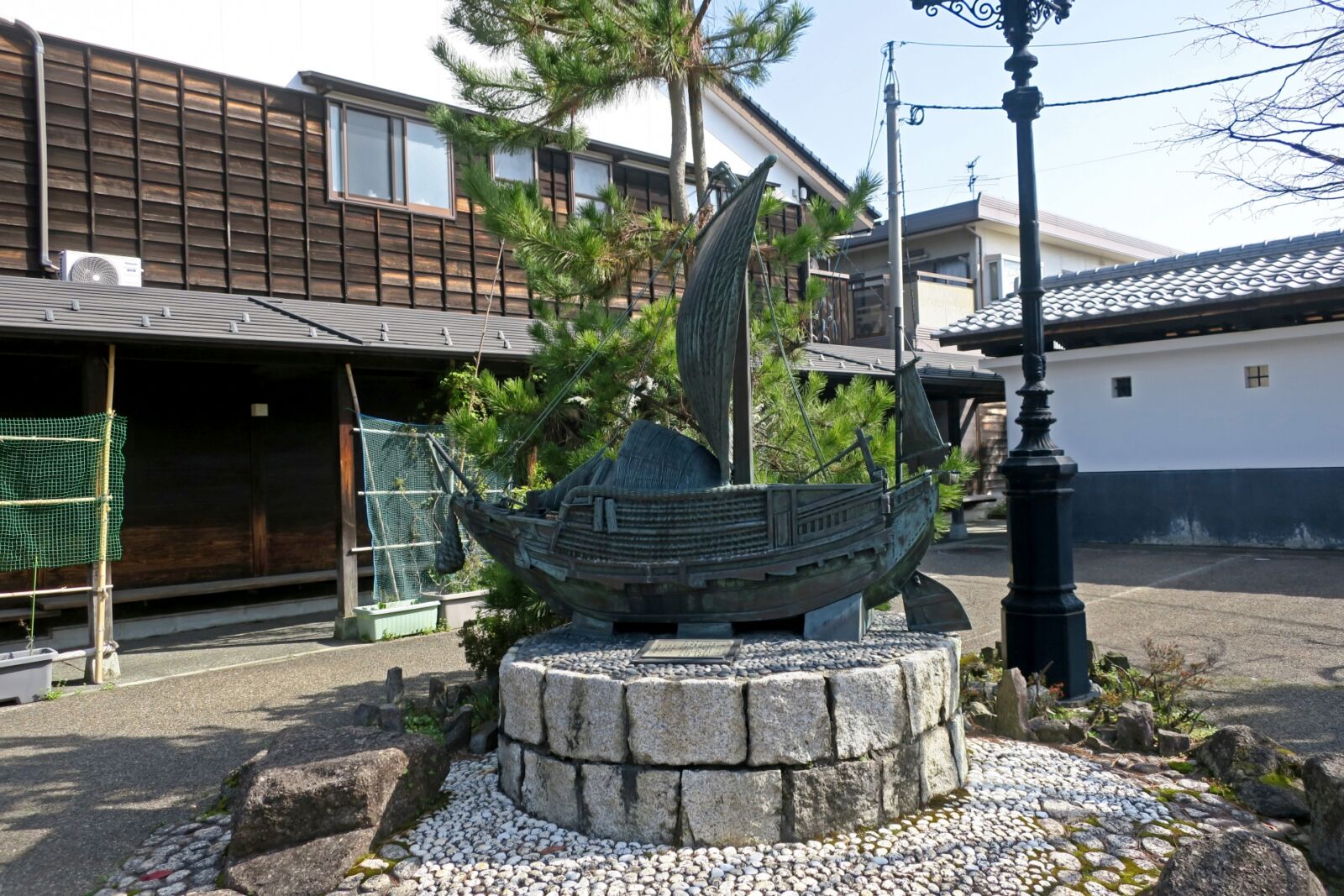
North of Toyama Station by either canal boat or tram, this was the main port for the Toyama City area historically. There are still a number of buildings still remaining from the period such as the old merchant houses of the Baba and Mori Family. If food is your thing, this is a great place to be. Iwase port is famous as the main port for the shiro-ebi or white shrimp, a local specialty. The seafood in general is amazing and there are plenty of restaurants around where you can try it or taste the different sakes of the region.
14 / OWARA KAZE NO BON FESTIVAL / September
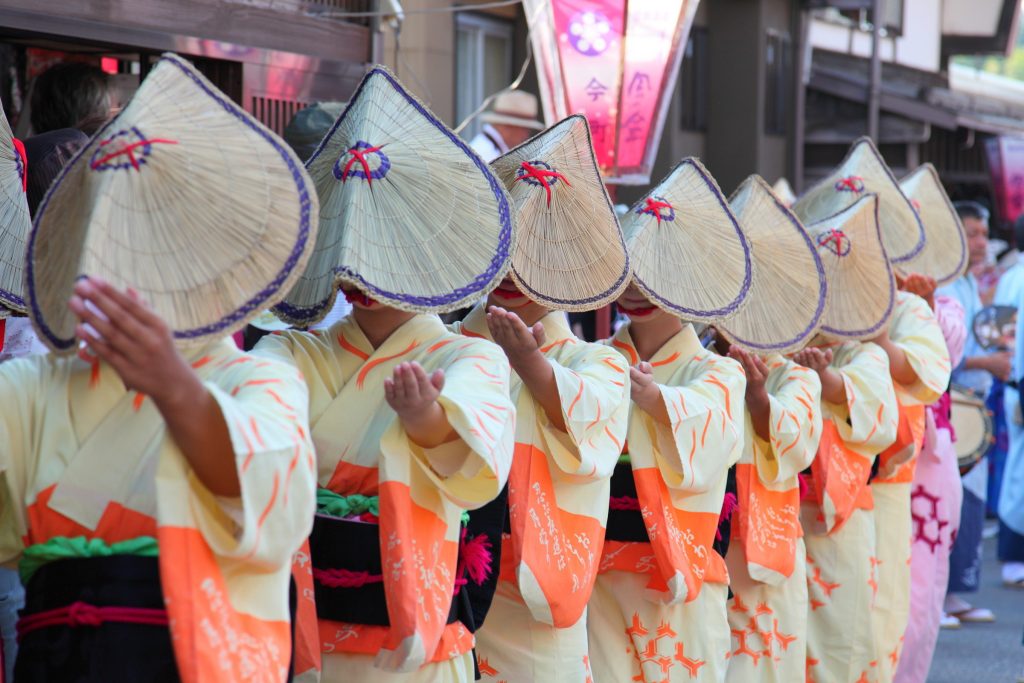
Taking place over the first three days of September, the ‘Owara Kaze no Bon Festival’ sees dancers fill the streets of Yatsuo – in the south of Toyama City – as a prayer for a good harvest. The festival runs each day from around noon to past night, as dancers, drums, traditional instruments and happy locals fill the night with color, noise and joy. Free shuttle buses run to and from Toyama Station. If needed, just ask the station attendants for assistance.
15 / ASHIKURAJI / all year round
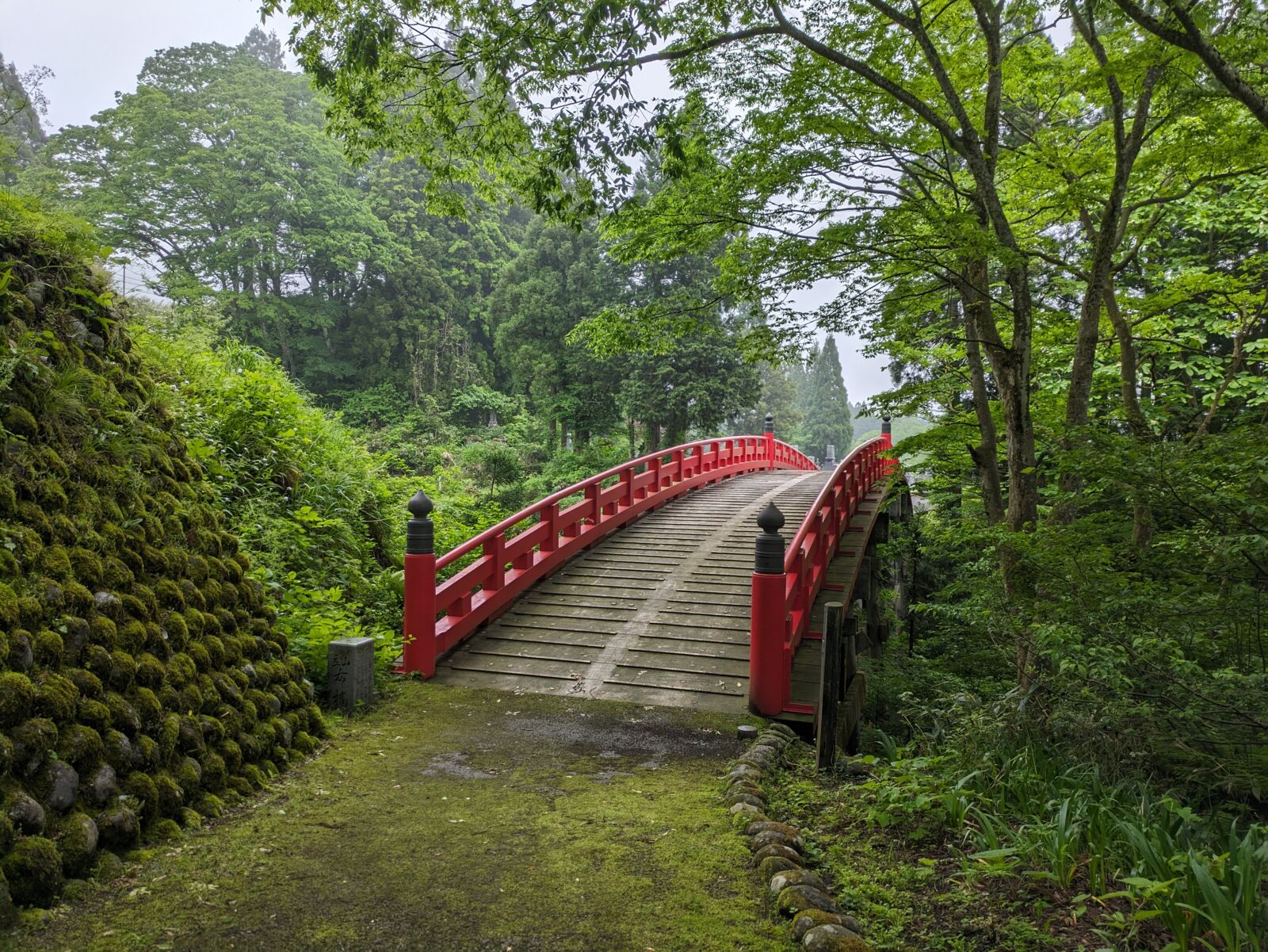
At the foot of the Central Japan Alps, Eastern Toyama has been a spot known for its spirituality and its importance in Japanese religion. Ashikuraji is considered the entry point to Mt. Tateyama with many people even today stopping here before starting the ascent. Enma, the god who decides who goes to heaven and hell, also has a temple of worship. Just below that is a bridge over a ravine that is considered one that crosses from the land of the living to the land of the dead. The entire area has an interesting feel and a deep history that goes back hundreds of years.
The road to Tateyama and Ashikuraji is one you can experience on one of our tours! See the temple of Enma, the bridge and then head up to the spectacular natural beauty of Murodo and Mt/ Tateyama. Here you can see the famous Snow Walls for yourself. Check out our Kurobe-Tateyama Alpine Route Tour if you’re coming from either Kanazawa or Toyama.
New Tour
1 Day Tour from Kanazawa & Toyama: Tateyama Alpine Route Snow Wall and Mysterious Valley
- Spots:
- Pick-up:
- Drop-off:
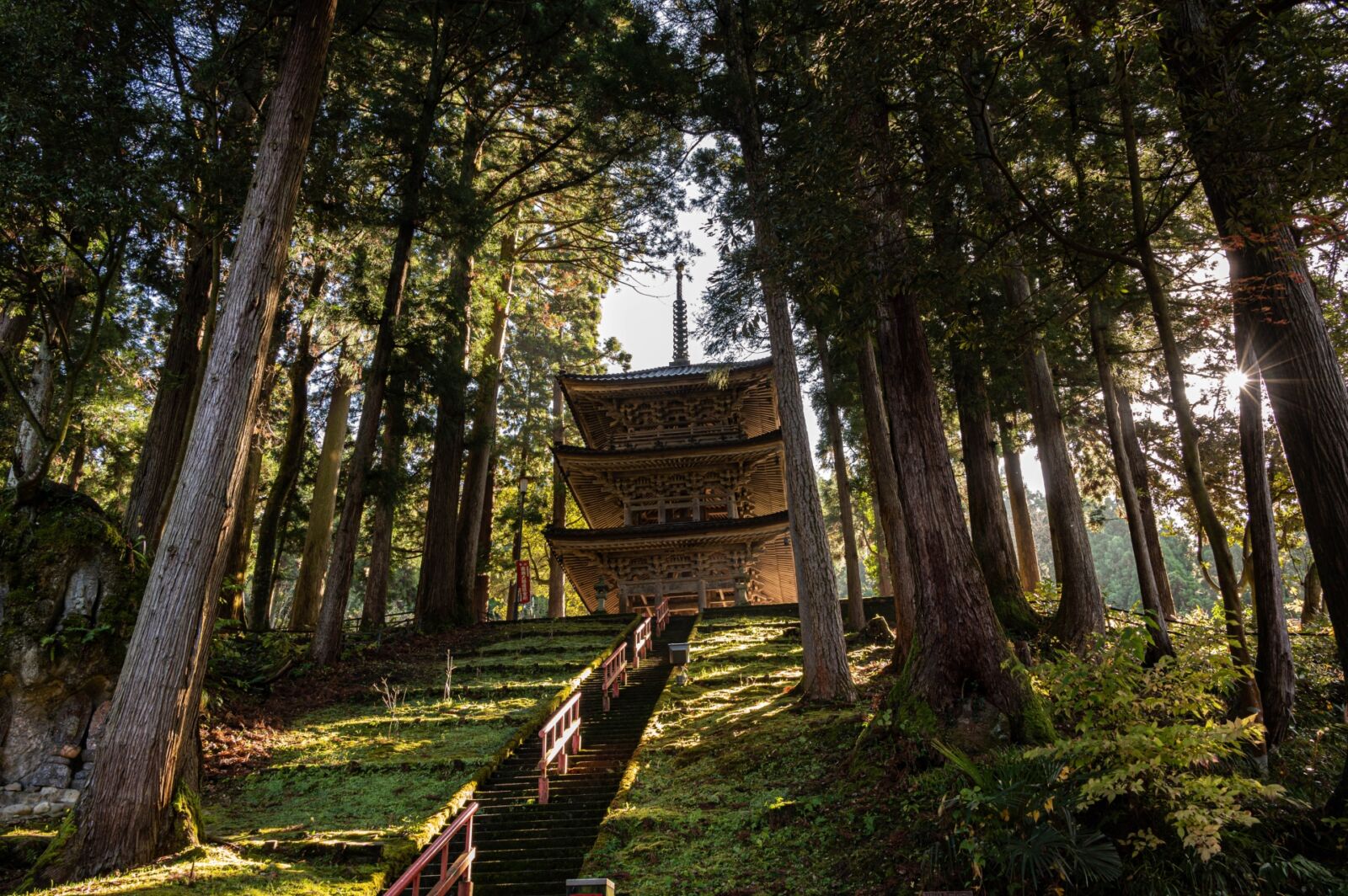
Kamiichi is a bit north of Ashikuraji but still in the mountains. This area has few temples that each have their own unique reason for visiting. The first is Ohiwasan-Nissekiji Temple which has a 1300-year-old Buddhist god carved into rock, six small waterfalls for waterfall training and a beautiful small gorge with nice views. If you go a bit farther into the mountains you can see the house from the anime Wolf Children: Ame & Yuki (Okami-no-kodomo no Ame to Yuki). Ganmokusan-Tateyamaji Temple is a picturesque example of what everyone thinks of when they think about Japanese temples. The approach is lined with giant and old Japanese cedar trees. The final holy site is Ana-no-Tanireisui which is a temple on top of the site of a fresh water spring. The climb up is lined with many stone statues with the spring fountain itself being three small dragons.
16 / NAMERIKAWA & UOZU/ all year round
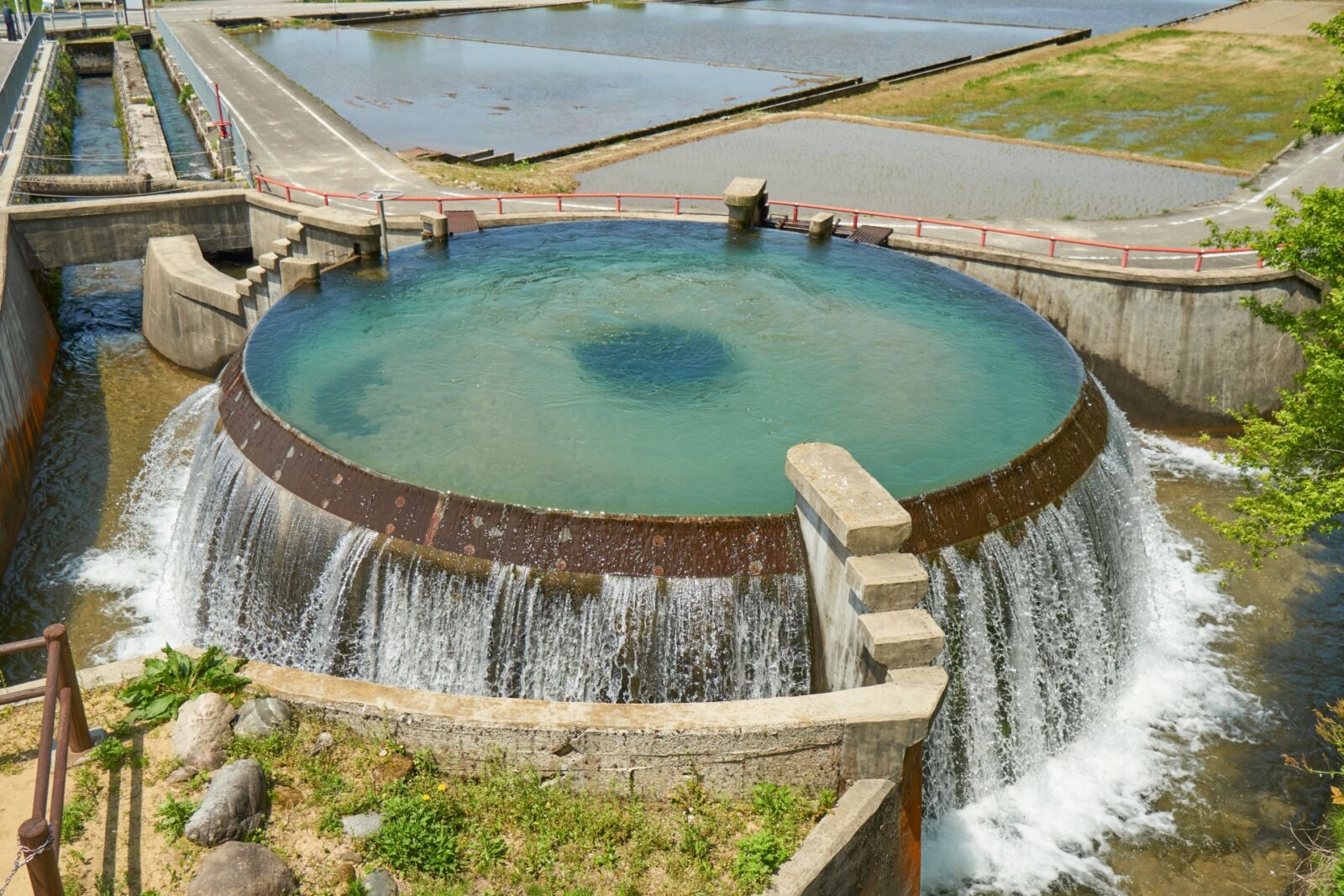
Further east up Toyama Bay are some lesser-known places if you want to enjoy seafood, nature or both. Namerikawa is famous for its glowing squid that you can go out and see at night from the beginning of April to early May. These are also edible so you can eat them at local restaurants! On land in Uozu is the Buried Forest, a museum that showcases a tree that was once preserved underwater and is between 1500 and 2000 years old. Deep in the mountains is another tree, the Horosugi, which is actually multiple cedar trees that grew into one huge tree over hundreds of years. That and much more are part of a nature park that you can enjoy. The final interesting thing to see are the water delivery devices that are built in a beautiful way and the color of the water make it something quite unusual and unique to this region.
17 / TAKAYAMA / all year round
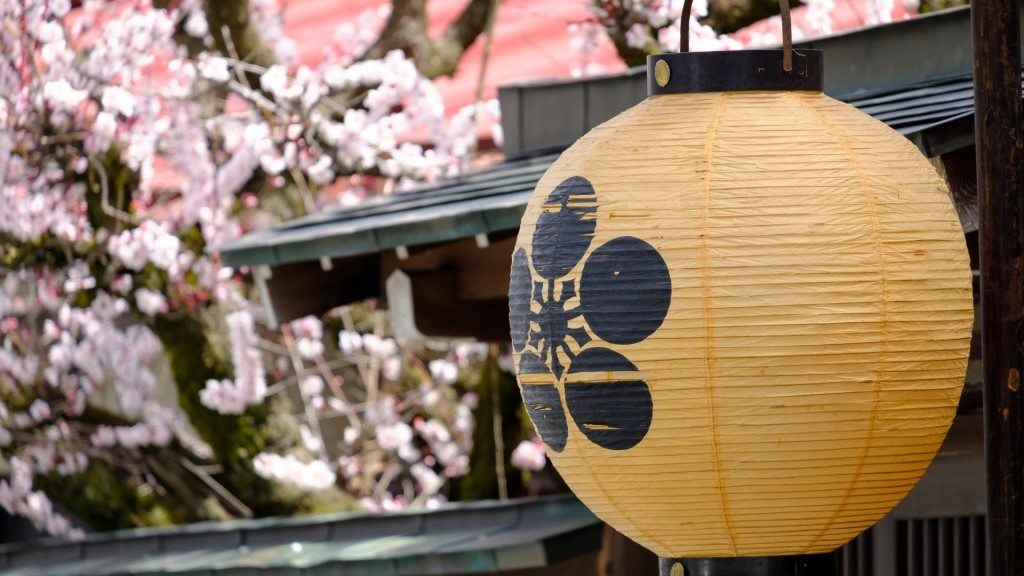
Around one hour from Shirakawa-go and Gokayama, the historic old town of Takayama is another popular destination. Famous for the excellent preservation of its Edo Period (1603-1868) historic center, Takayama draws large crowds. The old town has a variety of shops such as traditional miso makers, sake breweries with tastings, high-quality beef venders and various different types of cafes. In the eastern part of the city are a variety of temples and shrines that can be a good place to explore and get away from the crowds. Takayama is also home to two of Japan’s great festivals that occur once in spring and once in autumn. You can get a feel for the size of the floats used in the festival at the Takayama Festival Museum. Takayama is a great small city where you can get a feel for traditional Japan and also explore the natural beauty that surrounds the city.
Explore the historic streets of Takayama and also the famous UNESCO World Heritage Site Shirakawago and its thatched-roof gassho-zukuri houses. You will feel like you are transported to the Edo period in both urban and rural senses. Check it out below!
Best Selling
1-Day Tour from Takayama: Explore Scenic Old Japan in Takayama and Shirakawa-go
- Spots:
- Pick-up:
- Drop-off:
18 / KANAZAWA / all year round
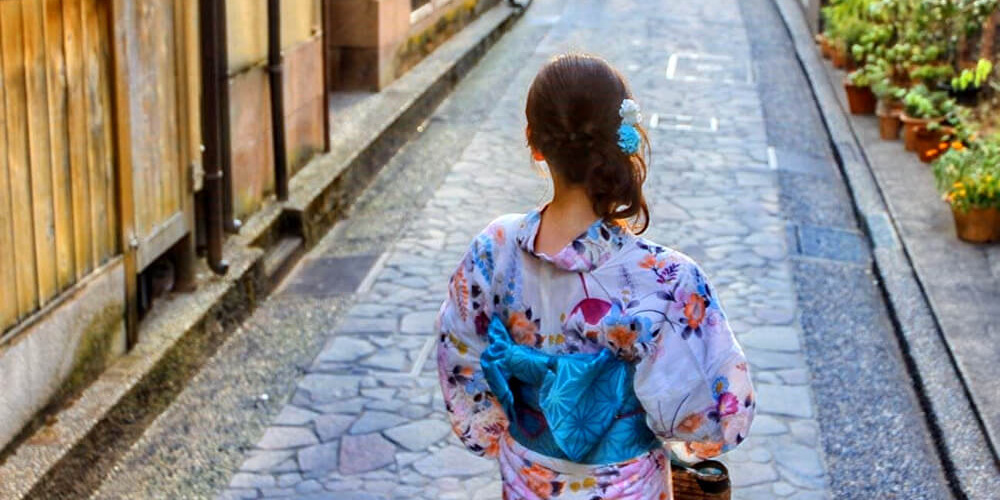
As the northern terminus on the Hokuriku Shinkansen Line, Kanazawa is a convenient and popular stop enroute from Tokyo to Kyoto and Osaka (or the reverse itinerary). One of the most historic and enjoyable cities in Japan, Kanazawa is well-suited to a multi-day visit combining the many attractions of the city with nearby regional highlights. From it’s historic attractions and districts to its excellent galleries, museums, shopping and dining, visitors tend to fall in love with Kanazawa and wish they’d allowed more time in their schedule to explore all it has to offer.
The traditional geisha district, the stunning Kenrokuen garden, the bustling Omicho Fish Market and the beautiful Nagamachi Samurai District are all must sees and feature on our walking tour of Kanazawa. There is also a matcha experience where you can taste matcha and sweets while looking over a 400-year--old Japanese garden. Check it out below!
19 / SHIRAKAWA-GO / all year round
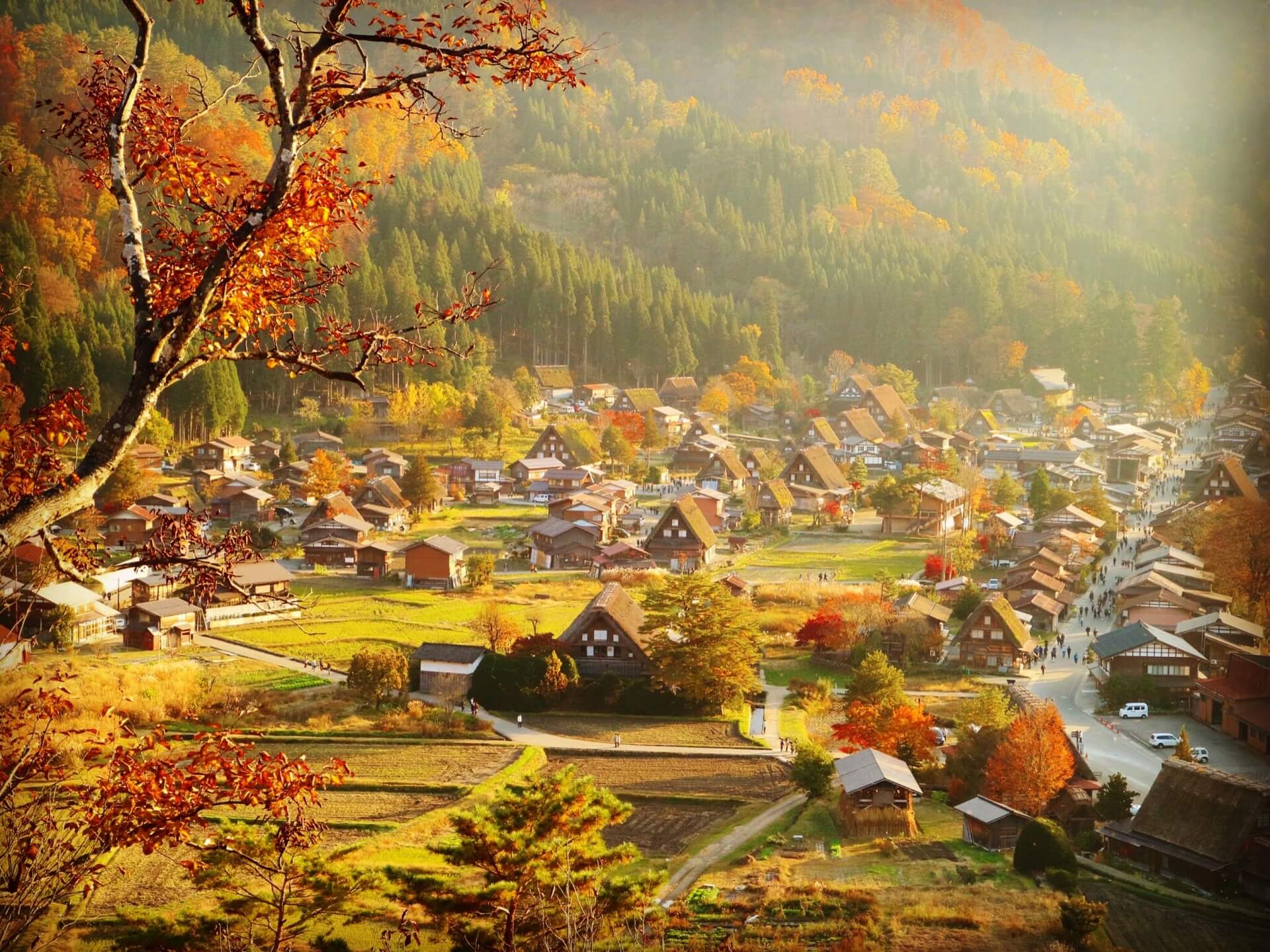
Easily accessible by bus from Toyama Station, the villages of Shirakawa-go and Gokayama were inscribed on the World Heritage list in 1995. Actually consisting of three villages, they are known for this distinctive ‘gassho-style’ thatch-roofed houses set in a beautiful alpine setting of rice fields and high mountains above. World Heritage-listing has ensured that the villages are hugely popular with both domestic and international tourists but don’t let that put you off. The villages are well worth visiting and walking away from the central area of the main village of Ogimachi, will quickly have you unencumbered by other visitors. Many of the homes you can enter, either preserved as a museum or as shops, cafes and restaurants.
Do you want to experience Shirakawago along with the woodcarving village of Inami and Gokayama? Join us for a tour where you can experience the real rural Japan along with making your own Japanese washi paper on our Inami-Gokayama-Shirakawago Tour from Kanazawa.
Best Selling
1 Day Tour from Kanazawa: Shirakawa-go, Gokayama and Wood Carving Village
- Spots:
- Pick-up:
- Drop-off:
20 / ITOIGAWA / all year round
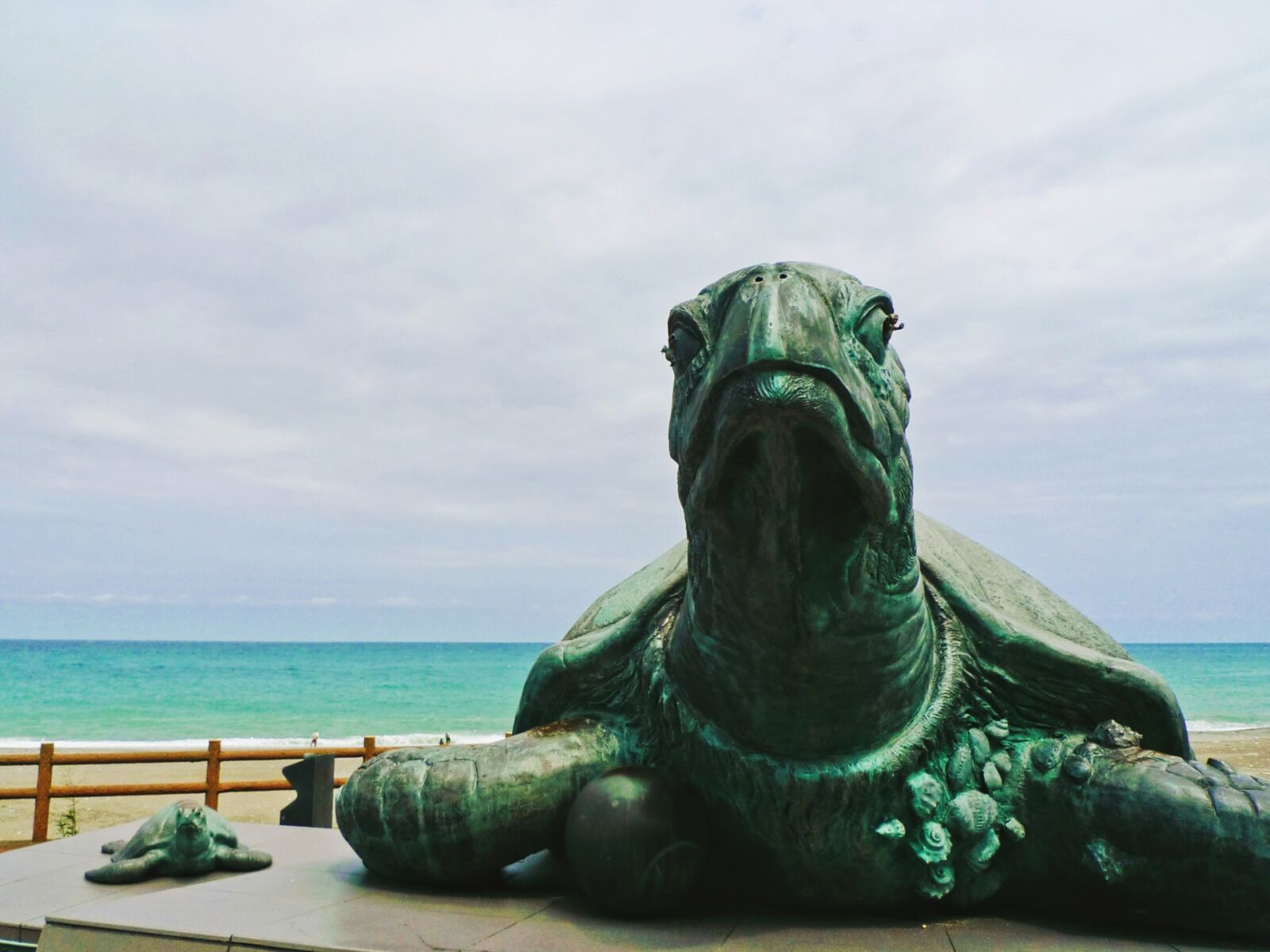
On the Sea of Japan coast and with a long history that stretches back, geologically, millions of years. Itoigawa is where the Fossa Magna, or a tectonic fault line is visible for you to visit, see or even feel for yourself. This unique geology helped make the area famous as the largest producer of Japanese jade (like the turtle seen above), which you can see at the museum in town. There is sometimes jade to be found in the rivers and seashore so be on the lookout! There are also two very nice Japanese gardens in Gyokusuien and Hisuien. Finally, if nice natural sites mixed with shinto shrines is more your thing, make sure to head over to Benten-iwa, a rock formation off the coast with a torii gate that you can actually climb.
21 / FUKUI / all year round
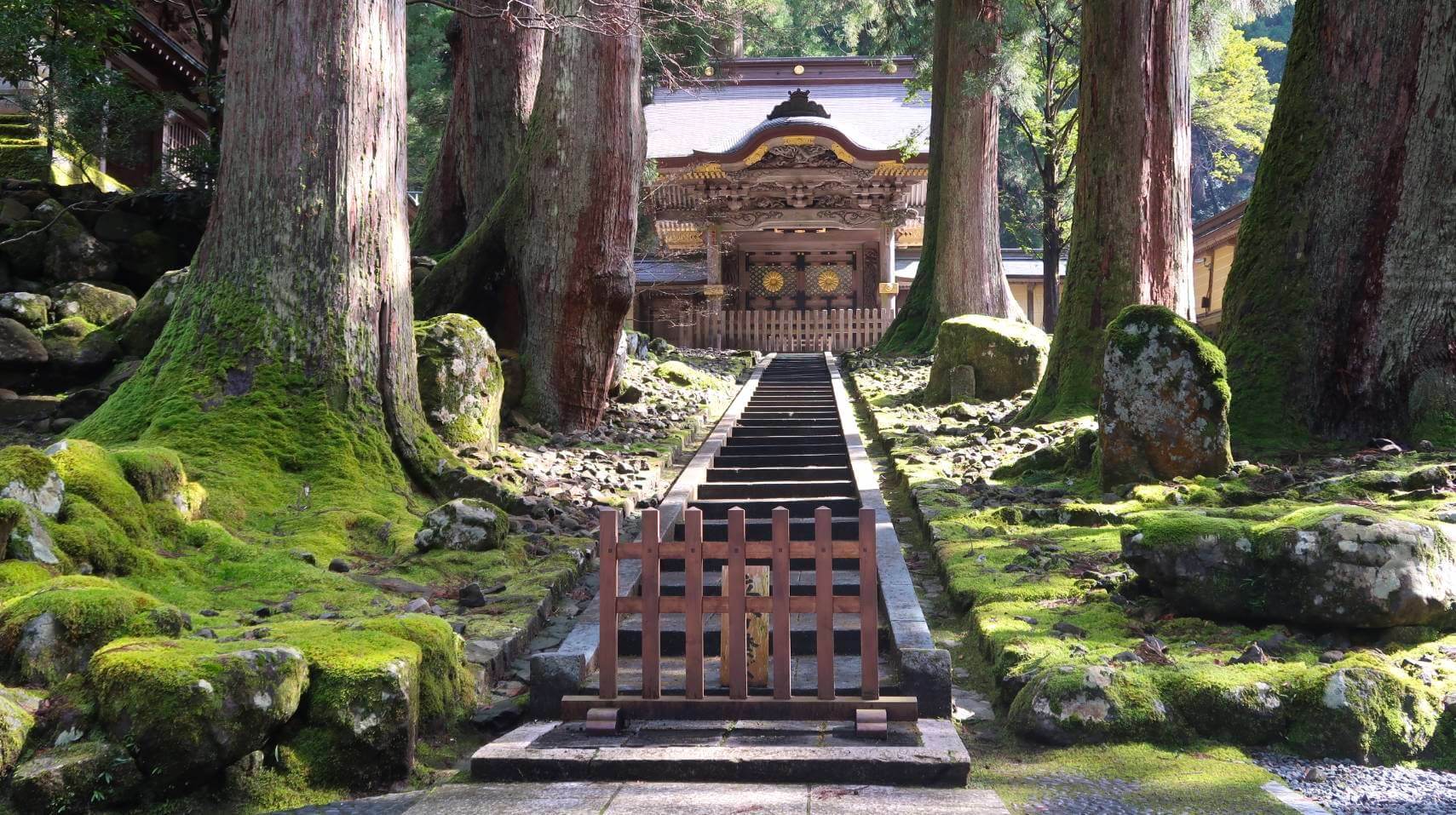
Fukui Prefecture hugs the north coast of Japan, far from the sprawling metropolises of Tokyo, Yokohama and Osaka. This is a tranquil corner of Japan where you can enjoy open spaces, small towns, great seafood and a couple of the country’s best destinations. Largely undiscovered by international visitors, the Fukui Prefectural Dinosaur Museum is one of the best museums in Japan while the sprawling temple complex Daihonzan Eihei-ji is as beautiful and inspiring as it is historically important. Throw in a couple of other intriguing attractions and some of the best crab in Japan, Fukui is quietly confident in its ability to impress!
Visiting the atmospheric Eihei-ji Temple can be difficult but you can explore it with one of our tours. Not just the temple but you can visit Fukui Castle, get views of the city and go deep into this historical city. Join us for a full day exploring the best of Fukui City and Eihei-ji.
1 Day Tour from Kanazawa: Eiheiji Temple and Fukui City Castle Town
- Spots:
- Pick-up:
- Drop-off:
22 / JIGOKUDANI MONKEY PARK / all year round
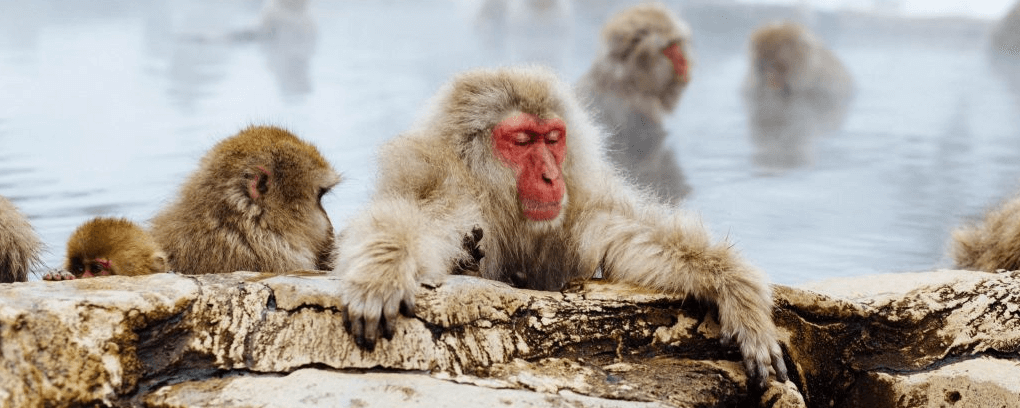
Accessible via Nagano Station, on the Hokuriku Shinkansen, the Jigokudani Monkey Park is one of Central Japan’s most well-known destinations. At its most popular through the snow of winter, the park is in fact open all year round. The monkeys – known for their hot spring-bathing antics – come to the park in all seasons with each offering its own reasons to visit.
If monkey business is what you are up to, our tour of the park is perfect for you! With a visit to the historic Zenkoji Temple in the morning, sake tasting, and lunch, you will find so much to do both inside and outside the Monkey Park. Operating year round and every day, this tour is just waiting for you to click the reserve button!
23 / ENJOY THE REGION'S MANY HOT SPRINGS / all year round
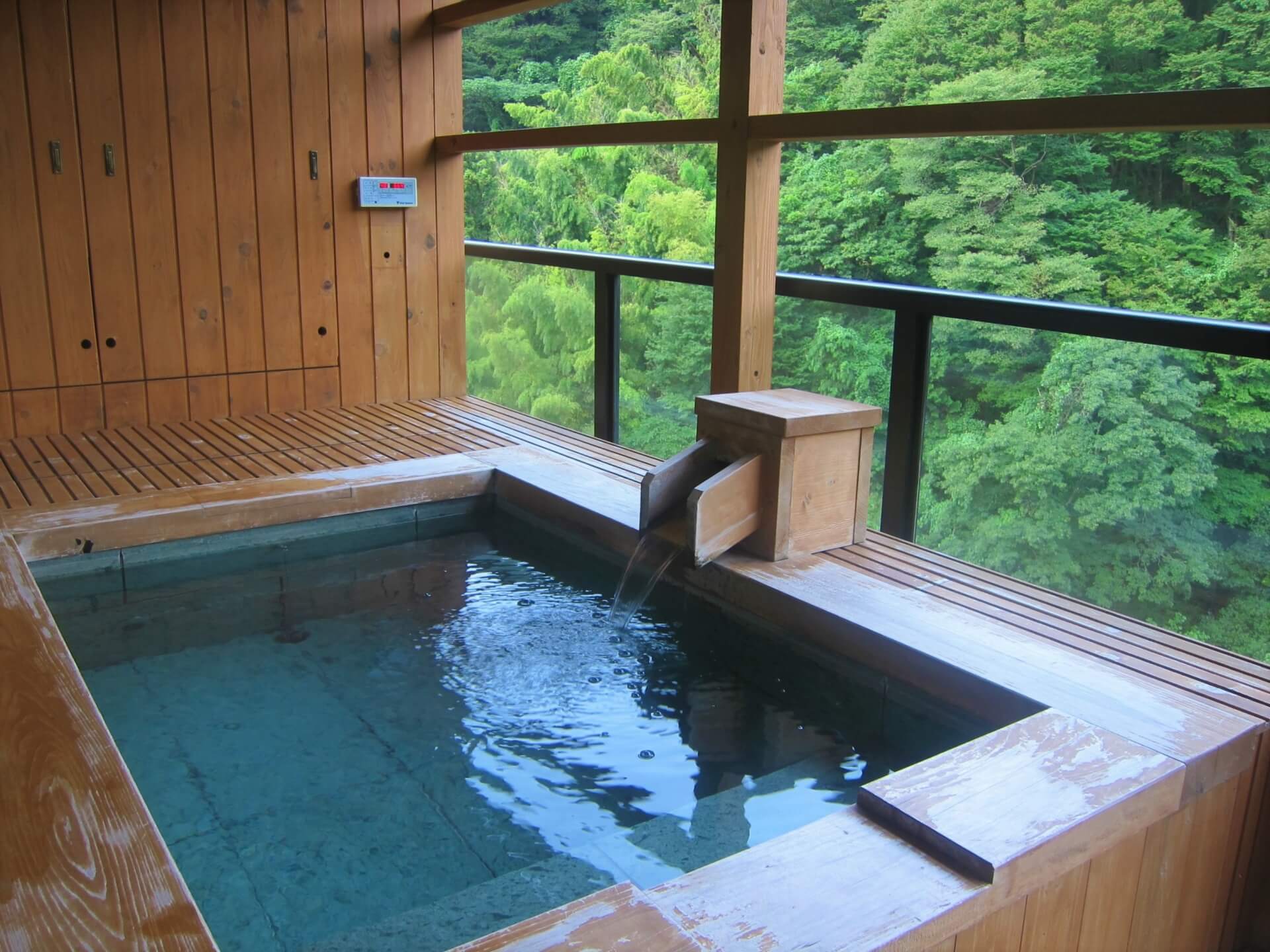
Home to countless natural hot springs, enjoying an ‘onsen’ while in Central Japan really is a must-do activity! In the cold months of winter and cooler months of autumn, dipping into a thermal bath feels fantastic whereas in the warmer months of spring and summer, the initial heat of onsen leads your body to cool itself – a truly pleasurable feeling. Spread throughout the region, the historic onsen towns – including nearby Nozawa Onsen, Yudanaka Onsen and Shibu Onsen – have numerous ‘ryokan’ (traditional guesthouses) with their own in-house onsen. Our ‘Onsen’ home page introduces everything you need to know about using an onsen, the benefits and where to find them. So take inspiration from the monkeys and get bathing!
24 / KAMIKOCHI / April to November
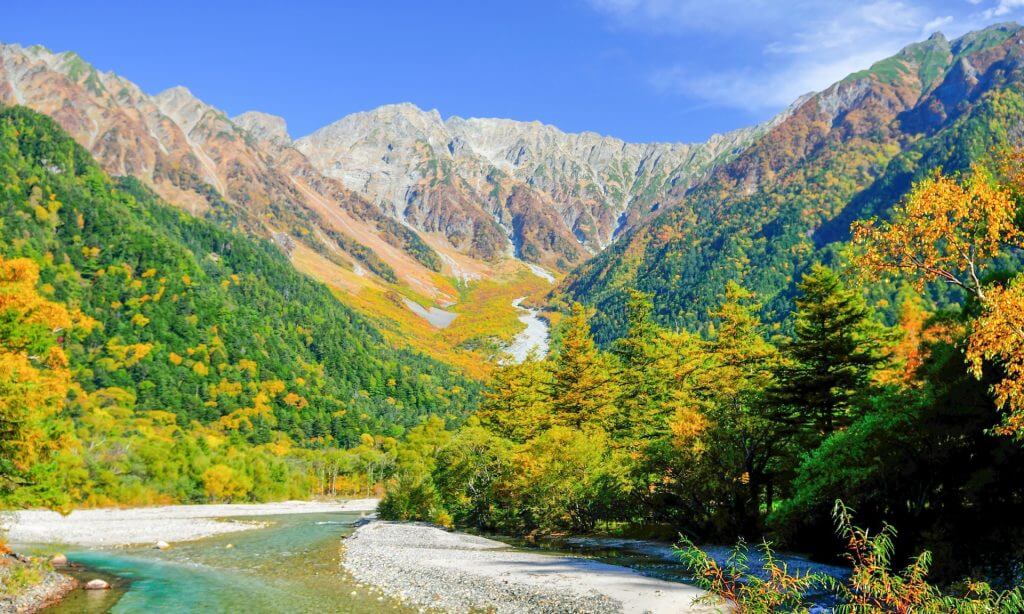
Situated in the Chubu Sangaku National Park, Kamikochi is a pristine and beautiful alpine valley open to the public from mid-April until mid-November each year. The valley follows the Azusa River while some of Japan’s tallest mountain peaks rise to over 3000 meters above. From the Kamikochi Bus Terminal, walking trails span out along the valley – suitable to anyone of reasonable fitness – before more advanced hiking and mountaineering trails lead into the mountains. Considered the jewel of the Chubu Sangaku National Park, visiting Kamikochi is one of Nagano’s most memorable experiences – a truly special place of natural and spiritual importance.
Best Selling
1-Day Tour from Nagano and Matsumoto: Kamikochi & Matsumoto Castle
- Spots:
- Pick-up:
- Drop-off:
Reaching Kamikochi can be a bit of a hassle, especially if you don't have your own car. Luckily, on our tour you won't have to worry about transport at all as our private bus brings you to all destinations on the trip including Matsumoto Castle and Kamikochi. Instead, you will be free to relax and enjoy your guides stories, ask whatever questions you have, and take in the amazing scenery.
25 / MATSUMOTO CASTLE / all year round
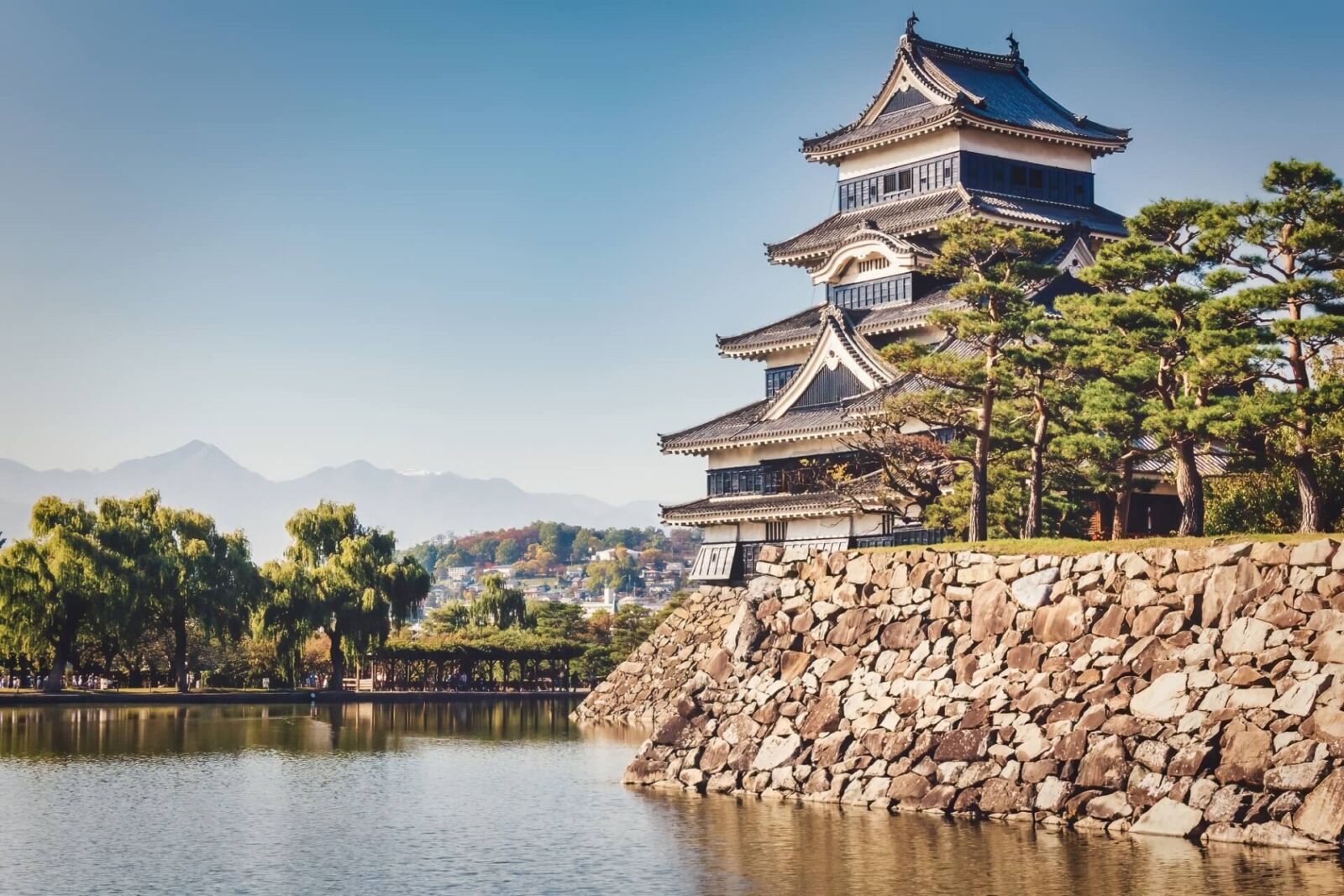
Standing guard over Matsumoto City for more than 400 years, Matsumoto Castle is a registered National Treasure and for Japanese people, an instantly recognizable structure. Visiting the castle is an easy and enjoyable day trip via Nagano Station or over the mountains, from Takayama or Kamikochi. While there, enjoy the historic character of the city along with its many good cafes, restaurants, museums and shopping.
BEST PLACES TO STAY WHEN VISITING TOYAMA
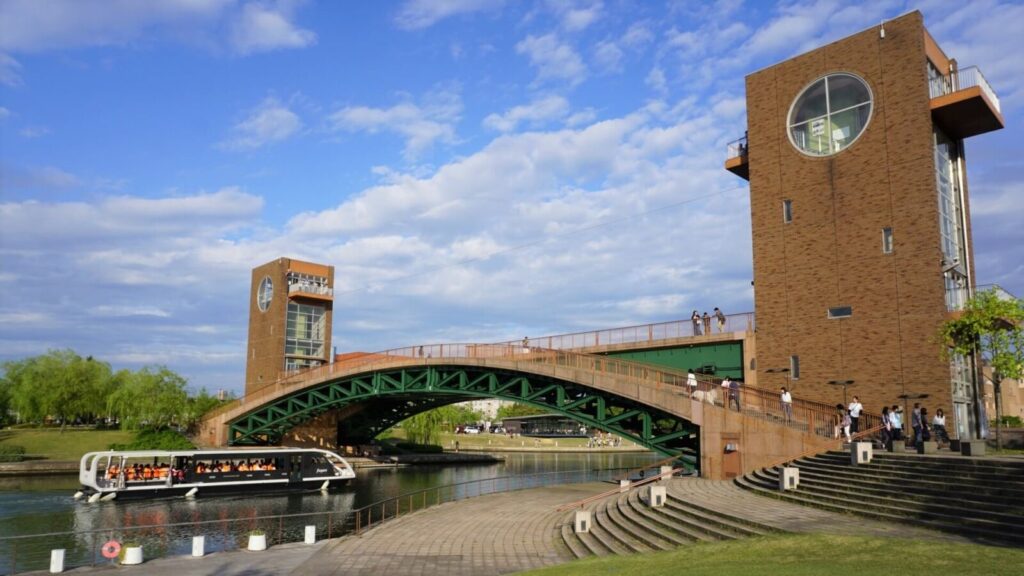
Visitors to Toyama have a good range of accommodation to choose from in the city with some other options located within easy reach of Toyama Station. Most accommodation in Toyama City is found in and around the station and Toyama Castle Park. Moving away from the city, visitors to popular destinations including Takaoka, Kurobe Gorge and the Tateyama-Kurobe Alpine Route also have great options in all of those locations. Our 'Best Places to Stay in Toyama' page includes information about options in the city and other nearby destinations including links to accommodation listings.
HOW TO GET TO TOYAMA

As a stop on the Hokuriku Shinkansen line running from Tokyo to Kanazawa, Toyama is easy to reach from the capital and beyond. Our 'How To Get To Toyama' page has directions for many popular starting points including from the capital and its airports, Nagano, the monkey park, Nagoya, Kyoto, Osaka and more.
TOURS AND CHARTERS AROUND TOYAMA
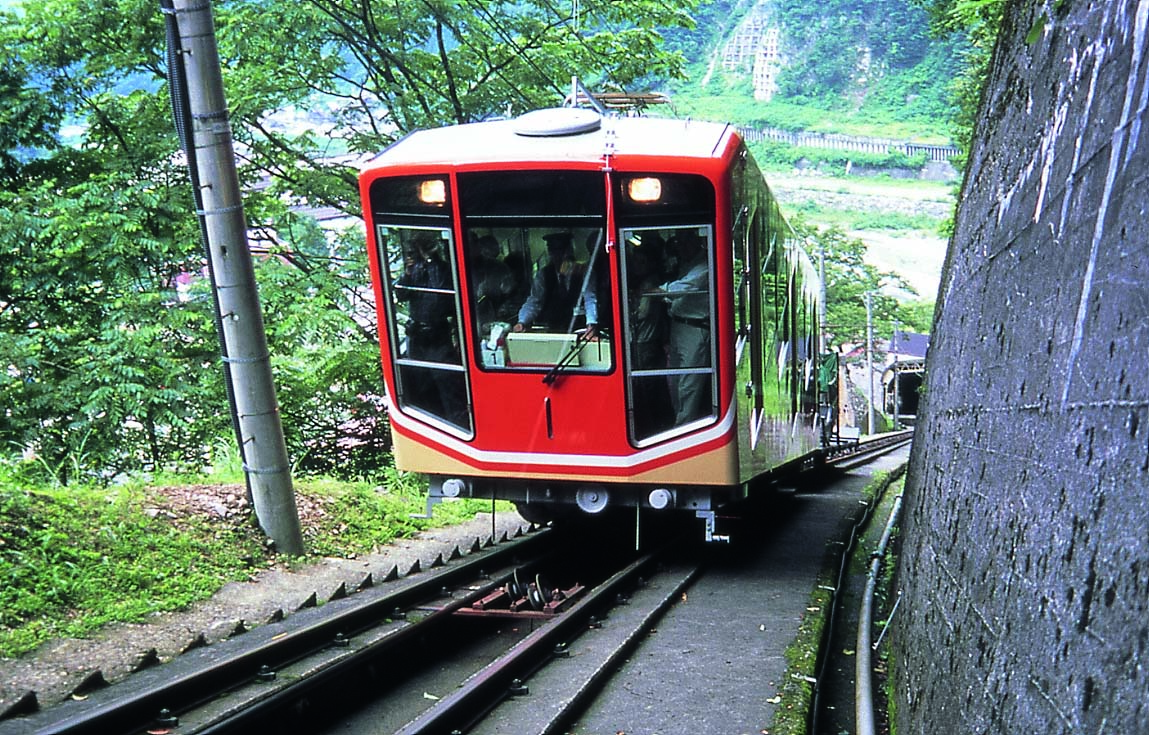
At Snow Monkey Resorts we have tours operating around Japan - and that includes the Toyama area. With so much going on, and so much natural beauty, there is no chance that we would ever have left this area out of our line up. If you've been convinced that visiting Toyama is a good idea (and it really is), then the following tours will be just what you are looking for.
New Tour
1 Day Tour from Kanazawa & Toyama: Tateyama Alpine Route Snow Wall and Mysterious Valley
- Spots:
- Pick-up:
- Drop-off:
One of Toyama's biggest international attractions is the Tateyama-Kurobe Alpine Route, without a doubt. The towering snow walls here are truly unique and are something that is hard to see outside of Japan. The easiest way to make it up to this magnificent natural beauty is through one of our tours. Hop on one of our buses as we head up the mountain, stopping in a mysterious village before reaching the top where you can explore the Snow Walls and other areas. Check the link above for our Tateyama-Kurobe Alpine Route from Kanazawa and Toyama.
1 Day Tour from Kanazawa: Kurobe Gorge and Unazuki Onsen
- Spots:
- Pick-up:
- Drop-off:
Accessible from Toyama Station via Unazuki Onsen, Kurobe Gorge is quickly emerging as a popular destination for international visitors. Regarded as one of the three most beautiful gorges in Japan, Kurobe is best experienced riding the Kurobe Gorge Railway which covers a meandering and winding 20km span in approximately 80 minutes. The open-air carriages allow visitors an intimate experience of the surrounding landscape with stations along the route allowing access to walk trails, onsen, restaurants and accommodation. On our day tour of the area, you will have a day to enjoy the train ride and stunning scenery of the area, with a guide to help you make the most of it.
1 Day Tour from Kanazawa: Takaoka's Temples, Metalworking and Mountain Views
- Spots:
- Pick-up:
- Drop-off:
While a little out of the way, the Amaharashi Coast is a famous sight for many Japanese – known for its pristine beauty and Onnaiwa (Woman’s Rock) set against the background of the North Japan Alps including Mt Tate., and having inspired artists and poets for countless years. The spectacular view of the mountains against Toyama Bay may be difficult to access so join us for a tour! It combines other sites in Takaoka such as the Japan Heritage Site of Zuiryuji, the Big Buddha of Takaoka and a metalworking workshop. If you’re interested, find more information above on our Takaoka Tour page.
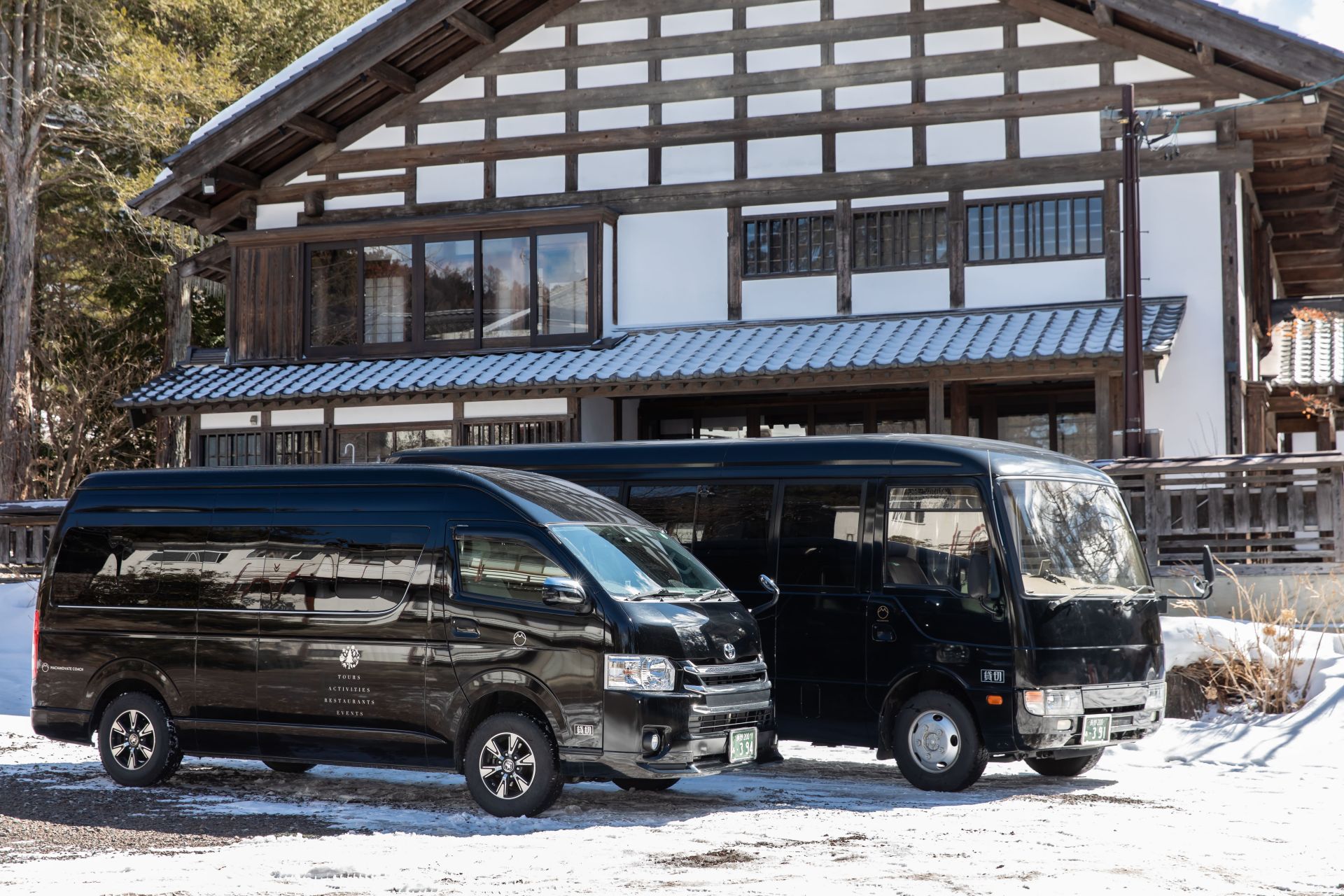
For a more personalized experience, private charters are also available. We can pick you up from a location of your choice anywhere in Central Japan, and bring you to your preferred destination. Airport pickup from Tokyo or Nagoya, even Osaka, is also possible. Our services may be used for taking day trips that include a few hard to reach destinations as well, removing the hassle of using often infrequent public transport options. A guide can be requested for an additional fee to turn the day into a completely private tour, where you decide the itinerary and our guides show you around in a timely and engaging manner. For more information concerning pricing and availability, please see here.














